| |
|
India as a destination offers a very unique and diverse cultural delight to any traveler. Indian culture is an amalgamation of customs, traditions, languages, values, beliefs and lifestyle which is thousands of years old. Though with passage of time a part of Indian Culture has seen drastic changes to keep up with the changing times but astonishingly, have still managed to retain its old values and traditions even in the such fast changing world. Several elements of ancient Indian culture like Ayurveda, Yoga, Relgion, Spirituality, Indian Spices and Cuisine has a deep impact all over the world. |
|
|
| |
| India is home to various religions like Hinduism, Jainism, Buddhism and Sikhism and most of these have crossed all national barriers and being followed in many other countries as well. Religion in India is the axis of Indian culture and life of a majority of Indian people. Apart from these religions, Christianity and Muslim religions are also widely followed in India. This shows the secular nature of Indian system where in all the religions and their followers exist together in complete harmony. Each individual has the right to follow the religion of is choice and his own way. |
| |
| Family systems and numerous colourful festivals add spice to the culture of India. For generations and generations the joint family system has been the backbone of family system which is fading from metro cities but still holding its ground in smaller cities and villages. Indians enjoy a lot of festivals around the year due to its multi cultural and multi religion society where everybody enjoys all the festival be it national or regional. For all these reasons India is called a country with unity in diversity. |
| |
|
| |
| Day 01 : Arrive Mumbai |
| Meeting and assistance on arrival and transfer to hotel. |
| |
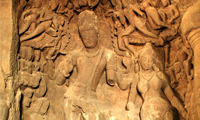 |
Day 02 : In Mumbai |
| Breakfast at the hotel. |
| |
| Morning half day excursion to Elephanta Caves. An early morning excursion across the Mumbai harbour to 1200-year old Elephanta Caves housing some of the most beautiful rock-cuts of the period. The famous Trimurti sculpture of three-faced Shiva depicting his three aspects as Creator, Preserver and Destroyer is powerfully portrayed in the massive sculpture. Closed on Mondays and not available during the Monsoon. |
| |
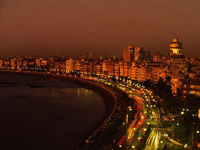 |
Afternoon half day visit to Gateway of India, Mumbai's principle landmark. This arch of yellow basalt was erected on the waterfront in 1924 to commemorate King George V's visit to this colony in 1911. Drive past the Afghan Church. Secretariat of Maharashtra Government and along the Marine Drive which is fondly known as the 'Queen's Necklace'. Visit Jain temple and Hanging Gardens which offer a splendid view of the city, Chowpatty, Kamala Nehru Park and also Mani Bhavan where Mahatma Gandhi stayed during his visits to Mumbai. Drive past Haji Ali Mosque, a shrine in honour of a Muslim Saint on an island 500 m. out at sea and is linked by a causeway to the mainland. Stop at the 'Dhobi Ghat' where Mumbai's 'dirties' are scrubbed, bashed, dyed and hung out to dry. Watch the local train passing close by on which the city commuters 'hang out like laundry' - a nice photography stop. Continue to the colourful Crawford market and to the Flora fountain in the large bustling square, in the heart of the city. Overnight at hotel. |
| |
| Day 03 : Arrive Ahmedabad |
| Breakfast at hotel. Later transfer to airport to connect flight for Ahmedabad. Overnight at hotel. |
| |
| Day 03 : In Ahmedabad |
| Breakfast at the hotel. |
| |
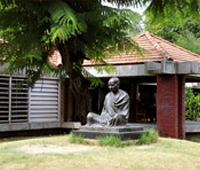 |
Post breakfast leave for full day city tour of Ahmedabad visiting Sabarmati ashram built in the year 1915 and the origin of India's Independence struggle. This very place was the home of Mahatma Gandhi till 1930 and was also referred as Satyagrah Ashram. The ashram houses a museum, library, auditorium and photo galleries. The museum exhibits the life of Mahatma Gandhi in form of books, archive of letters written by Gandhiji, manuscripts of his articles; several films composed on the life of Gandhiji & India's freedom struggle etc. There are plenty of books in the library that will give you a valuable insight into the life history of Mahatma Gandhi. Continue to Calico Museum, established in 1949, this museum houses a variety of fabrics and clothes. Also visit the Bhadra Fort built in 1411 AD. Laying adjacent to the fort is Teen Darwaza is one of the longest as well as the oldest gateways of the Ahmedabad city. Later visit Hathee Singh temple built in 1850 and is famous for its fabulous architectural styling and designing that consists of intricate carvings. Also visit the famous Akshardham Temple one of the finest specimen of modern architecture. |
| |
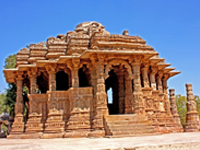 |
Day 04 : Ahemedabad |
| Breakfast at the hotel. Later full day excursion to Modhera and Patan (300 Kms/08 Hrs). |
| The 11th-century sun-temple complex at Modhera at a distance of 99 Kms from Ahmedabad is the Solanki dynasty's most striking architectural achievement. It is positioned in such a manner that the rising sun's rays Illuminate the deity in the inner most sanctum sanctorum through the main Entrance at the time of equinox only. The Sun temple is not very large or as imposing as may be supposed by those who have seen other Hindu temples in India, but even from a distance it is obvious that it is covered by intricate carvings of Gods, Goddesses, men, women and animals in numbers out of all proportion to its actual size, and is a true gem in the architectural annals of India. |
| |
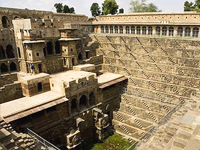 |
Patan is believed to have been a prosperous fortified town with mints of gold and silver, well laid gardens with fountains and trees, grammar school of Sanskrit and Prakrit, numerous Hindu and Jain temples and Sahastralinga Talav. The glory of Patan reached its peak during the Solanki period and also termed as the golden age of Gujarat. During these years, the city was a great place of learning and a prosperous tradi ng center. The rulers were great patrons of fine arts and architecture and undertook construction of m any civic and religious edifices in the city. Wethered with time and age the the ruins of the ancient city are still visible, making it a good archaeological site. The old city contained market places, temples, gardens, educational centers and city squares. Today, Patan has been transformed from what it was earlier.
Evening return back to Ahemedabad. |
| |
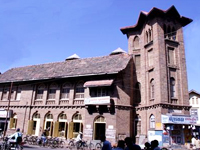 |
Day 05 : Drive Ahemedabad - Bhavnagar |
| Breakfast at the hotel. Later drive to Bhavnager (187 Kms/5 Hrs). |
| Afternoon city tour visiting Barton library, Gandhi Smriti, the memorial built in remembrance to the Father of Nation. The ground floor housing the Barton museum is a repertoire of archeological remains from the surrounding regions. The Gandhi museum on the first floor takes one on a dramatic journey through the life of the Mahatma. Also visit the Takhteshwar temple situated on the hillock in the center of the city, this popular landmark is a Shiva temple constructed way back in 1893 and named after its patron Takhtsinhji. Sitting on the serene marble courtyard of the temple one can have a panoramic view of the entire city as well as the surrounding landscape. Overnight at hotel |
| |
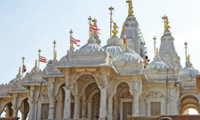 |
Day 06 : Drive Bhavnagar - Gondal |
| Early morning leave for Gondal en route visiting Palitana (50KMS/1 ½ hrs) The construction of temples of Palitana of the Jain sect amongst the Hindus spanned over a period of 900 years and was structured in two phases. From the 11th to 12th centuries AD as a part of the resurgence of temple building all over India, the first phase of temple architecture was constructed. The second phase followed later, from the 16th century AD onwards. Muslim invaders destroyed some of the earliest temples built in the 11th century AD during the 14th and 15th centuries AD. |
| |
| Caution |
| The hill on which this temple is located, is 3 kms from Palitana proper, and the 600 m climb over 3000 stairs to the top of the mountain is an unforgettable experience. Beginning at dawn is recommended, to avoid the mid-day heat. Climb not recommended for senior citizens or for guest experiencing difficulty in walking/climbing stair. However the brave hearts can try climbing up to the top. |
| |
| There on continue your drive to Gondal, (230kms /6-7hrs). On arrival check in at hotel. Gondal, a city state in the times gone by, was ruled by a family of car enthusiasts whose royal passion resulted in a fine collection of automobiles which are now part of a museum in the palace premises. Overnight at hotel |
| |
| Day 07 : In Gondal |
| Morning city tour of Gondal: Visit the old Darbargadh a seventeenth century structure which reputedly cost Rupees Nine Lakhs thus earning the sobriquet ‘Navlakha Palace’. The palace is built on series of arches delicately carved and inscribed in stone with a magnificent spiral staircase leading all the way to the top. |
| |
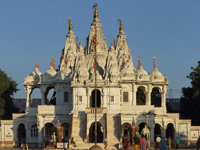 |
The Royal Garages have an extensive collection of vintage and classic cars including a 1910 New Engine, a Delage and a Daimler from the 1920s, a 1935 Mercedes, 1935 Packard two-door convertible, 1941 and 1947 Cadillac, 1955 Cadillac limousine, sports cars from the 1950s and 1960s like the Mercedes 300 SL, Jaguar XK 150 and Chevrolet Camaro, numerous imposing American cars of the 1940s and 1950s, a fleet of four-wheel drive vehicles from the World War II and post-war period. |
| Also visit the Mandvi Chowk. The central marketplace of Gondal is a typical riot of color, the bustle of street cries and hawkers, vendors and beggars and wafting aromas of food stuffs amidst flowing bales of trade cloths in a variety of exotic prints. To experience Gondal is to take a walk down its winding streets inhaling the soul of the city and its people. |
| |
| Our last stop is the Bhuvaneshwari Ayurvedic pharmacy, which still makes traditional herbal medicines according to ancient principles. The Bhuvaneshwari Stud Farm has remarkable specimens of Kathiawadi horses, Gir cattle and other ethnic breeds of livestock, which have won prestigious awards at national level and prizes at local horse and cattle shows. Overnight at hotel. |
| |
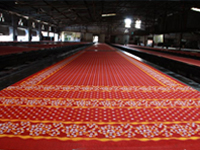 |
Day 08 : Drive Gondal - Sanasgir (Via Junagarh) 120kms/5-6hrs) |
| Morning leave for the lion county-Sasangir. |
| Our first stop is at Jet Pur a town renowned as a center for block printing and dyeing. The very air is laden with the smells of dye stuffs spiraling out of large copper vats with translucent layers of colored fabrics drying to the percussion beat of wooden printing blocks. Jetpur is a pleasure for textile enthusiasts who can visit and experience the process of printing and dyeing. |
| There on to Junagarh where one can reach out and touch the two and a half millennia of human civilization, spanning dominant periods of Jainism, Hinduism, Buddhism, and Islam, all of whom left deep imprints on the city. On arrival in Sasangir, check in at your lodge. |
| |
| Time permitting park visit In Gir you touch the history of India before humanity itself. Before monuments, temples, mosques and palaces. Or rather, a history as humanity was emerging, when humans coexisted with lions, before the former had overrun the continent (and the world) and pushed the latter to the brink of extinction. Overnight at lodge. |
| |
 |
Day 09 : In Sanasgir |
| Many come to Gir because, outside of Africa, it is the only place with wild lions. But to truly experience Gir and the lions, you must explore their natural habitat, with everything from tiny wild birds, not easily seen, but heard singing in the forest canopy, to crocodiles floating in the marsh waters. Driving around, you are uncommonly aware you are in someone else's territory. You stay in your vehicle because you are in the home of lions, leopards, hyenas, crocodiles; you remember that humans do not rule the world, and however "advanced" we think we are, most of us would not survive very long on our own in a place like Gir. |
| |
| Along with the famous lions, who number around 350, the park is also home to four other wild cats. There are around 300 leopards, though they are nocturnal and thus harder to spot. Of the three smaller wildcats, the jungle cat is the most widespread, and lives in deciduous scrub and river areas. The mysterious desert cat is almost never seen. The rusty spotted cat, previously thought to only live in the Dings of southeast Gujarat, has only recently been found in Gir. Overnight at lodge. |
| |
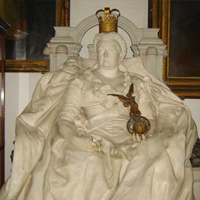 |
Day 10: Drive Sasangir - Rajkot |
Breakfast at the hotel. Later drive away from the land of the big cats, north to the city of Rajkot (150kkms/4hrs). On arrival check-in at hotel. |
| |
| Located in the heart of Gujarat, the fascinating town of Rajkot was the capital of the princely state of Saurashtra. It was also reputed as a former British government headquarters where Mahatma Gandhi spent early years of his life. A peaceful town some 30-35 years back on the riverbank of Aji, today Rajkot is known as the "Paris of Saurashtra". Afternoon city tour. Visiting the Watson Museum and LibraryLocated in the Jubilee Gardens, the museum is a good place to experience the heritage of Saurashtra. Two imperial lions flank the entrance. The museum offers copies of artifacts from Gumali, 13th-century carvings, temple statues, natural history exhibits, and dioramas of local tribal costumes and housing styles. A huge marble statue of Queen Victoria seated on a throne also draws the attention of tourists |
| |
| Day 11 : Rajkot - Mumbai |
| Breakfast at the hotel. In time to connect your flight for Mumbai. On arrival transfer to hotel. |
| |
| Day 12 : Leave Mumbai |
| In time transfer to airport to connect flight for onward destination |
|
|
|
|
| |
|
| |
| Day 01 : Arrive Delhi |
| Meeting and assistance on arrival and transfer to Hotel. |
| |
| Delhi : In Delhi’s 3000 years of existence, seven cities stood where the present capital of India stands. Here you’ll encounter a fascinating blend of the ancient and the contemporary - where government buildings, medieval palaces and bazaars exist besides a modern metropolis. Delhiis a city waiting to be explored. |
| |
| Overnight at the hotel. |
| |
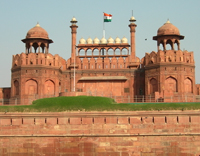 |
Day 02 : Delhi |
| After breakfast sightseeing of Old and New Delhi. |
| |
| Morning proceed to visit the 7th city of Delhi, Shahjahanabad (Old Delhi), built by the Mughal Emperor Shah Jahan (1639-48 AD) after he shifted his capital from Agra to Delhi. Red Fort – the 17th century imposing fortress built in red sandstone is surrounded by a huge boundary wall 33m high. Inside are exquisite palaces and beautiful gardens. Opposite the Red Fort lies Jama Masjid (Friday Mosque) made of red sandstone and white marble, completed in 1656. It is India’s largest mosque where more than 20.000 people can kneel in prayer. Visit Raj Ghat on the banks of the river Yamuna, Mahatma Gandhi’s Memorial, where he was cremated following his assassination in January 1948. An eternal flame burns 24 hours. |
| |
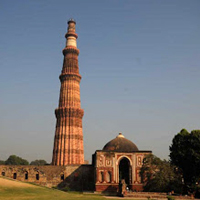 |
Afternoon visit New Delhi. Visit Qutub Minar - the landmark of Delhi, a huge tower of victory started in 1199 and completed in 1368. The minar is 72.5m high with a diameter at the base 14.4m and 2.7m at the top. Proceed to the Rashtrapati Bhawan once the Viceroy’s residence is now the official residence of the President of India. Design ed by Lutyens, it combines western and eastern styles – the dome reflects the Buddhist stupa, the chattris Hindu and the graceful colonnades very British. The Government Buildings designed by Baker, are topped by baroque domes and decorated with lotus motifs and elephants, while the north and south gateways are Mughal in design. The northern building has an inscription with “Liberty will not descend to a people; a people must raise themselves to liberty. It is a blessing which must be earned before it can be enjoyed”. The Parliament House, designed by Baker is 173m in diameter. The India Gate (42m), commemorates the 70,000 Indian soldiers who died in the 1st world war. 13516 names of British and Indian soldiers killed in the Afghan War of 1919 are engraved on the arch and foundations. Under the arch, the Amar Jawan Jyoti commemorating Indian armed forces’ losses in the Indo-Pakistan war of 1971. Overnight at the hotel. |
| |
| Day 03 : Delhi - Agra By Surface 204 Kms. |
| Agra stands on the right bank of the river Yamuna, was once the seat of the Mughal rulers, the zenith of art and an enshrined romance. A town famous for its beautiful medieval monuments. The passion of the Mughals for building endowed it with some of the loveliest buildings in the world. |
| |
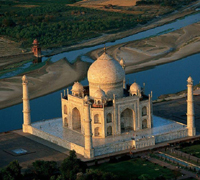 |
Visit the Taj Mahal (1631-1653), a poem in white marble, built by Shah Jahan in memory of his beloved wife, Mumtaj Mahal. Rabindranath Tagore calls "a teardrop on the cheek of time". Taj Mahal means "Crown Palace" and is in fact the most well-preserved and architecturally beautiful tomb in the world. It is best described by the English poet, Sir Edwin Arnold, as "Not a piece of architecture, as other buildings are, but the proud passions of an emperor’s love wrought in living stones." It is a celebration of woman built in marble and that’s the way to appreci ate it. As a tribute to a beautiful woman and as a monument for enduring love, the Taj reveals its subtleties when one visits it without being in a hurry. The dome is made of white marble, but the tomb is set against the plain across the river and it is this background that works its magic of colours that, through their reflection, change the view of the Taj. The colours change at different hours of the day and during different seasons. Like a jewel, the Taj sparkles in moonlight when the semi-precious stones inlaid into the w hite marble on the main mausoleum catch the glow of the moon. The Taj is pinkish in the morning, milky white in the evening and golden when the moon shines. These changes, they say, depict the different moods of woman. |
| |
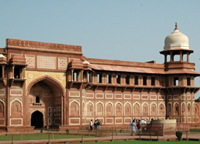 |
Also visit the Agra fort, built alongside the Yamuna river stretching almost 2.5 km. The fort’s colossal double walls rise 20 m in height and measure 2.5 km in circumference. The fort is surrounded by a moat. The lofty battlements of the Agra fort cast its protective shadow over the far stretching mansions of nobles and princes built along the riverfront. The magnificent towers, bastions and ramparts and majestic gateways symbolized the confidence and power of the third Mughal emperor. The fort contains splendid palaces both in red sandstone and white marble built by two generations of prolific builders, Akbar and later on by Jahangir and Shahjahan. Of the nearly 500 Akbari buildings built in the Bengal and Gujarati traditions, only a few have survived, arrayed in a band on the riverfront. Overnight at hotel. |
| |
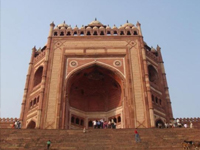 |
Day 04 : Agra - Jaipur by Surface 232 Kms. |
| Breakfast at hotel. Depart Agra or Agra, altogether a journey of about 6-7 hours (237 Kms). En route visit Fatehpur Sikri. Fatehpur Sikri was built by Emperor Akber in 1569 and abandoned after 15 years due to scarcity of water. Visit the remarkably well-preserved, graceful buildings within the 'Ghost City' including the Jama Masjid, tomb of Salim Chisti, Panch Mahal Palace and other palaces that speak of the grandeur and splendor of the Mughal empire at the height of its power. After visiting Fatehpur Sikri drive continue to Jaipur and check-in at Hotel. Overnight at Hotel |
| |
| |
| |
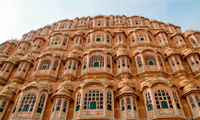 |
Day 05 : Jaipur |
| After breakfast, half-day excursion trip takes you to Amber Fort. En route, make a photo stop at the palace of winds the Hawa Mahal. A 5-storied building with 25cm thick facade from the 18 century having 953 windows and niches so that ladies of royal family could see the processions and events in the city without being visible to the people. Proceed to the Amber Fort situated 130m high with the Aravalli hills around and 11 km north of Jaipur. It was the ancient capital of the Rajputs till 1037. Enjoy an Elephant ride from the parking to the entrance of the fort. |
| |
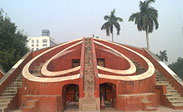 |
Afternoon visit the “Pink City” of Jaipur. The City Palace occupies the center of Jaipur. It now houses the Royal residence and museums with collections of textiles and costumes, armoury, manuscripts, paintings etc. Also visit Jantar Mantar (1728-34) by king astrologer Jai Singh II. The instruments are built of stone with marble facing on the important plains for measuring the harmony of the heavens. Each instrument serves a particular function and each gives an accurate reading. Overnight at the hotel. |
| |
| |
| Day 06 : Jaipur-Mandawa By Surface 160 Kms. |
| After breakfast, drive to Manwada and on arrival, check in at the hotel. |
| |
| In the heart of the Shekhawati region of Rajasthan lies the beautiful small town Mandawa, known throughout the state for its forts and havelis. The structures of this place reminds one of the cultural and social hotspot this place used to be in the bygone era. |
| |
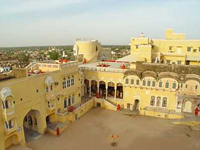 |
Mandawa is situated in the north Indian state of Rajasthan around 190 km off Jaipur, the capital of the state. The town lies between latitude 28.06° in the north and longitude 75.20° in the east. The fort town of Mandawa is well connected with the other places in region through a good network of roads. The compact and busy little market town of Mandawa was settled and fortified in 18th century by the dominant merchant families of the region. The wealthy businessmen of the village constructed many havelis and baolis with colored painting adorning their walls. Later on, with the migration of these merchant families, their old settlements remained in total obscurity with no one to look after them. Despite the time lapse and ignorance about these visual and architectural extravaganzas, their attraction did not fade and today they are some of the major attractions for the tourists visiting Rajasthan. Overnight at hotel. |
| |
| Day 07 : Mandawa-Bikaner By surface 205 kms |
| After breakfast, drive through typical desert country to Bikaner in the middle of the Rajasthan’s Thar Desert. On arrival, check-in at the hotel. |
| |
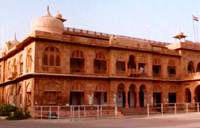 |
Bikaner founded by Rao Bika in 1488. An oasis town among scrub and sand dunes. The walled city retains a medieval air and sandstone architecture. Afternoon tour of Bikaner takes you to visit the Junagarh Fort which is unusual, because other major forts of Rajasthan were built on hilltops, but this fort is built on the desert plain, surrounded by a moat. Half day sightseeing of Bikaner. The city is bolstered by imposing walls and has a 16th century fort housing old palaces, temples and a mosque. Founded by Raja Rai Singh, the fort is distinguished by its long range of 37 pavilions, a line of balconies and aerial windows of varying designs. An enormous arched doorway leads to the Joramal temple. The royal chapel is Har Mandir where royal weddings and births were once celebrated. (3-4 Hours). Overnight at the hotel. |
| |
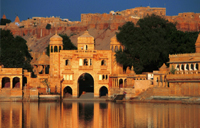 |
Day 08 : Bikaner- Jaisalmer By Surface 333 kms |
| After breakfast, drive to Jaisalmer and on arrival, check in at the hotel. Jaisalmer across the hot barren desert is magical as the city shimmers like a mirage. The golden sandstone town walls and narrow streets lined with exquisitely carved buildings, through which camel carts trudge leisurely, has an extraordinarily medieval feel and an incredible atmosphere. The fort inside perched on its hilltop contains some gems of Jain temple building, while beautifully decorated merchants’ havelis are scattered through the town. Afternoon Free. Overnight at the hotel |
| |
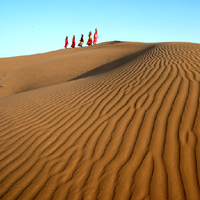 |
Day 09 : Jaisalmer |
| After breakfast, visit the Jaisalmer fort that stands about 100 meters over the city and in fact houses a citadel within its huge ramparts. Walking down the narrow cobbled stone lanes, one can feel the sheer magic of Jaisalmer. Several entrances called Pols , including the Ganesh Pol, Suraj Pol, Bhoota Pol and the Hava Pol guard the Megh Durbar and the Jawahar Mahal which were occupied by the royal family. Also visit the Havelis (mansions of the rich merchants) have beautifully carved facades, jali screens and oriel windows overhanging the streets below. Visit Salim Singh Haveli (17 century) which is especially attractive with peacock brackets. Nathumal Haveli (1885) was built for the prime minister. Patwon Haveli (1805) is a group of five, built for five brothers. Possibly the finest in town. They have fine murals and carved pillars. A profusion of balconies cover the front wall. |
| |
| Late afternoon excursion to Sam sand dunes to enjoy a camel ride and a magnificent sunset. Overnight at the hotel. |
| |
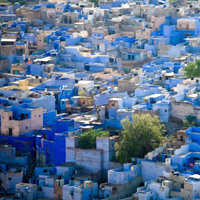 |
Day 10 : Jaisalmer- Jodhpur By Surface 333 kms |
| After early breakfast set out on the drive to Jodhpur. On arrival check in at hotel. Jodhpur is at the edge of the Thar Desert and is the largest city in Rajasthan after Jaipur. Among Rajasthan's many princely settlements, Jodhpur is one of the most distinctive. This five hundred year old settlement was the headquarters of the Rathore Rajputs' celebrations for their tales of daring. Jodhpur is known for its impressive fortifield bastions, specially those of Mehrangarh which have bee n witness to many battles and were associated closely with the history of the region. The years of peace that followed resulted in the building of palaces that were laid on open grounds and spread out in an elaborate European mannerAfternoon visit the impressive Mehrangarh Fort on a 37 m low sandstone hill built by Rao Jodha in 1459. From the top of the fort one can get a bird’s eye view of the old city. You will notice the predominance of blue houses referred to as Brahmin houses - the colour being associated with the high caste. Proceed to the Jaswant Thada, an imposing marble cenotaph built in 1899 for Maharajah Jaswant Singh II, and smaller memorials to other Maharajahs of Jodhpur. At the end of the tour enjoy a short walk through the local and vibrant bazaar of Jodhpur. Overnight at the hotel. |
| |
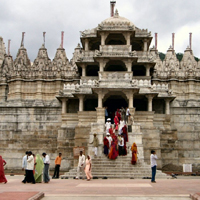 |
Day 11 : Jodhpur - Ranakpur - Udaipur By Surface 264 kms |
| After breakfast drive to Udaipur. En-route visit Ranakpur, the wonderful 3 temples of the Jain sect dating back to the 14th/15th century. The unforgettable main Temple dedicated to Adinatha the first Tirthankar (1439) built in marble took 65 years to complete. It is one of the five holy Jain pilgrimage centres, and has one of the best temple complexes. On arrival in Udaipur, check in at the hotel. |
| |
| Udaipur lies in the Girwa valley amidst the Aravali hills of south Rajasthan. It is considered a romantic city - with its lakes, gardens, temples and palaces - an Oasis in the Thar desert. The old city is a traditionally planned fortified walled city, a maze of narrow winding lanes flanked by houses with doorways decorated with Mewar folk art, windows with stained glass or jali screens, massive havelis with large inner courtyards and shops. The legendary Ranas who ruled, traced their ancestry to the Sun Dynasty. Overnight at the hotel. |
| |
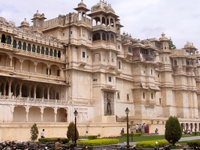 |
Day 12 : Udaipur |
| After breakfast visit the City Palace built on the bank of the Pichola Lake, by Maharana Udai Singh in 1570. The impressive complex of several palaces is a blend of Rajput and Mughul influences. Half of it is still occupied by the Royal family, and part converted into a museum. The Jagdish Temple (1651) was built by Maharana Jagat Singh. A fine example of the Nagara style of temple architecture. A brass Garuda stands outside and stone elephants flank the entrance steps Inside is a black stone image of Vishnu as Jagannath, the Lord of the Universe. Sahelion-ki Bari an ornamental pleasure garden specially made for the ladies of the palace in the 18th century. It has beautiful fountains, trees and flowers. Overnight at the hotel. |
| |
| Day 13 : Fly Udaipur - Mumbai |
| Morning transfer to airport to connect flight 9W 2207 (0820-0935 hrs) for Mumbai. On arrival transfer to hotel. Rest of the day at leisure. Overnight at hotel |
| |
| Day 14 : In Mumbai |
| Breakfast at the hotel. Morning half day excursion to Elephanta Caves. An early morning excursion across the Mumbai harbour to 1200-year old Elephanta Caves housing some of the most beautiful rock-cuts of the period. The famous Trimurti sculpture of three-faced Shiva depicting his three aspects as Creator, Preserver and Destroyer is powerfully portrayed in the massive sculpture. Closed on Mondays and not available during the Monsoon. |
| |
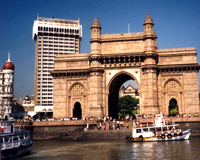 |
Afternoon half day visit to Gateway of India, Mumbai's principle landmark. This arch of yellow basalt was erected on the waterfront in 1924 to commemorate King George V's visit to this colony in 1911. Drive past the Afghan Church. Secretariat of Maharashtra Government and along the Marine Drive which is fondly known as the 'Queen's Necklace'. Visit Jain temple and Hanging Gardens which offer a splendid view of the city, Chowpatty, Kamala Nehru Park and also Mani Bhavan where Mahatma Gandhi stayed during his visits to Mumbai. Drive past Haji Ali Mosque, a shrine in honour of a Muslim Saint on an island 500 m. out at sea and is linked by a causeway to the mainland. Stop at the 'Dhobi Ghat' where Mumbai's 'dirties' are scrubbed, bashed, dyed and hung out to dry. Watch the local train passing close by on which the city commuters 'hang out like laundry' - a nice photography stop. Continue to the colourful Crawford market and to the Flora fountain in the large bustling square, in the heart of the city. Overnight at hotel. |
| |
| Day 15 : Fly Mumbai-Goa |
| Morning transfer to airport to connect flight 9W 475 (1200-1300 hrs) for Goa. On arrival transfer to hotel. Rest of the day at leisure. Overnight at hotel. |
| |
 |
Day 16 : In Goa |
| Breakfast at the hotel.Later proceed for Morning Half day sightseeing starts from the slopes of Altinho Hill for a breathtaking view of Panjim and river Mandovi. Arrive to Donapaula for a view of India's largest natural harbour Marmgoa. Proceed to Old Goa visiting Basillica of Bom Jesus where in is enshrined the body of St. Francis Xavier in a silver ornate casket. St. Cathedra, the biggest church in the East. The cathedral built in purist Tuscan style and is stagerring in proportions. In one chapel is kept the Cross of Miracles, said to grow in size & have healing properties. Heavily gilded central altars depict the martyrdom of Saint Catherine, to whom the cathedral is dedicated St. Cajetan built like St. Peters (Rome), Church of Lady Rosary and St. Monica. This huge, three-storied laterite building was commenced in 1606 and completed in 1627. Once known as the Royal Monastery on account of the royal patronage, which it enjoyed, the building is now used by the Mater dei Institute as a nunnery, which was inaugurated in 1964. Also visit Ponda, the temple city & visit Mangueshi & Shantadurga temples. Also visit the famous churches at Old Goa - Basilica of Bom Jesus & The Se Cathedral.Afternoon at leisure. Overnight at hotel. |
| |
| Day 18 : In Goa |
| Breakfast at the hotel. Full day free for independent activities. Overnight at hotel. |
| |
| Day 19 : In Goa |
| Breakfast at the hotel. Full day free for independent activities. Overnight at hotel. |
| |
| Day 20 : In Goa |
| Breakfast at the hotel. Full day free for independent activities. Overnight at hotel. |
| |
| Day 21 : Goa-Trivandrum |
| Breakfast at the hotel. Later transfer to airport to connect flight IT 2883 (1520-2015 hrs) for Trivandrum. On arrival transfer to the residence of your friend. |
| |
| Nett Per Person Rates For The Above Programme |
| Number of Pax |
Land Arrangements |
| 01 pax |
: USD 3668 |
| Each of 02 paying in Twin Sharing |
: USD 1981 Per Person |
| Single room supplement |
: USD 830 Per Single |
|
| |
| Additional |
| Entrances at the monuments |
: USD 89 Per Person |
| Instant Purchase Economy class airfare for Udaipur-Mumbai-Goa-Trivandrum |
: USD 499 Per Person |
| Normal Economy Class airfare for Udaipur-Mumbai-Goa-Trivandrum |
: USD 825 Per Person |
|
| (All the Airfare/Train fare and schedule currently applicable and subject to change without notice. Instant Purchase air fare is applicable for a limited number of seats and might vary on daily basis. The ticket purchased on this airfare is non refundable. Moreover the tickets have to be purchased at the time of booking and seats can’t be held on time limit. There is no guarantee that this fare will be applicable at the time of booking the seats. Shall try to book the seats on instant purchase (subject to availability). In case seats on instant fare not available normal airfare will be applicable) |
| |
| Hotels Envisaged Or Similar |
| city |
hotels |
No of nights |
| Delhi |
Hans Plaza |
02 |
| Agra |
Clark Shiraz |
01 |
| Jaipur |
Golden Tulip |
02 |
| Mandawa |
Desert resort |
01 |
| Bikaner |
Laxmi Niwas |
01 |
| Jaisalmer |
Gorbandh Palace |
02 |
| Jodhpur |
Ranbanka |
01 |
| Udaipur |
Shikarbadi |
02 |
| Mumbai |
Godwin |
02 |
| Goa |
Casa De Goa |
05 |
|
| |
| Rates includes following specific Services: |
| 1. Meeting and assistance on arrival and departure by a LPTI representative. |
| 2. Transfer from airport to hotel & vice versa, sightseeing, excursion and interstate travel by an air-conditioned medium car along with the transfer of baggage. |
| 3. 19 nights hotel accommodation on Double occupancy with bath at hotels listed above or similar on room plus breakfast basis. |
| 4. Check-in and check-out time at all hotels is 12 noon. |
| 5. English speaking local guides during the city tour. |
| |
| Rates include only services mentioned as above and DO NOT include any air/train fares, ENTRANCES at the monuments (which are given as supplement), airport taxes, visa charges, items of personal nature viz. telecalls, table drinks, laundry, tips etc. and any other services/expenses not accounted for in the above. |
| |
| IMPORTANT : Kindly note that names of hotels mentioned above only indicate that our rates have been based on usage of these hotels and it is not to be construed that accommodation is confirmed at these hotels until and unless we convey such confirmation to you. In the event of any of the above mentioned hotels not becoming available we shall book alternate accommodation at a similar or next best available hotel and shall pass on the difference of rates (supplement/reduction whatever applicable) to you. |
| |
|
|
|
|
| |
| DELHI - KATHMANDU - CHITWAN - KATHMANDU - VARANASI - KHAJURAHO - AGRA - JAIPUR - JODHPUR - UDAIPUR |
|
|
| |
| Day 01 : Arrive Delhi |
| Arrive Delhi. Meeting and assistance on arrival then transfer to hotel. |
| |
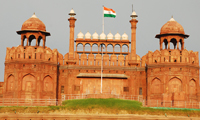 |
Day 02 : In Delhi |
| Breakfast at the hotel. Later full day sightseeing of New & Old Delhi. In New Delhi visit the 12th century Qutab Minar, gracefully hand-carved for its entire height of 234ft. and the iron pillar, which has withstood the ravages of time, the mausoleum of emperor Humayun, Drive past India Gate (memorial to viceroy’s residence) and the Parliament House, continue to Old Delhi, drive past Red Fort - a marvel in red sandstone, the Raj Ghat - memorial to Mahatma Gandhi, Overnight at hotel. |
| |
| Day 03 : Fly Delhi - Kathmandu |
| Breakfast at the hotel. Later transfer to airport to connect flight for Kathmandu. On arrival transfer to airport. Rest of the day at leisure. Overnight at hotel. |
| |
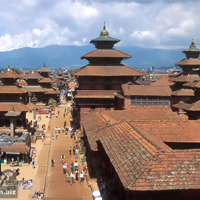 |
Day 04 : Kathmandu |
| Breakfast at the hotel. Morning half city sightseeing tour visiting the Durbar Square, Nearby is Narayanhity Palace, the home of Nepal's monarch. Though this place is out of bound for the tourists , one can very well appreciate the beauty from outside. Hanuman Dhoka, the ancient royal residential quarter, Mahadev and Parvati Temple, Machhender Bahl-holy place for the Buddhists and Hindus, Temple House of Kumari, the vestalvirgin or the living goddess. Walk around the local bazaars. |
| |
| Afternoon excursion to Patan and Swayambhunath. Patan is one of the major cities of Nepal. Patan is considered to be the oldest and most beautiful among the three royal cities ( Kathmandu, Patan, Bhaktapur ) in the Kathmandu Valley. It is best known for its finest tradition of arts and crafts and its rich cultural heritage. Also visit Swayambhunath, a 2500-year old site where, it is believed, the Radiant Lotus of the valley-mythology, settled when the water was drained by Manjushri, the god of Wisdom. (Non Hindus are not allowed inside Swayambhunath temple). Overnight at hotel. |
| |
| Day 05 : Kathmandu |
| Breakfast at the hotel. Morning visit Pashupatinath, Bodnath, Bhadgaon and Nagarkot. |
| |
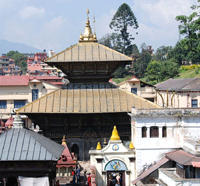 |
Pashupatinath is situated on the banks of river Baghmati. Here Shiva is worshipped in the form of lingam. (Only Hindus are allowed inside). In the month of February an annual pilgrimage on the occasion of Shivaratri is organized here every year. Bodnath is an important Buddhist pilgrimage centre. Visit the temple of Bodhnath, the collosal Stupa, one of the largest in the world. Also visit Bhadgaon - another Newar city founded in the 9th century. Visit the ancient gateway, Durbar Square the Royal Residential quarter of Bhupendra Malla, the famous five-storeyed temple of Nytapole in pagoda-style and other temples. |
| |
| Afternoon visit Nagarkot situated 32 kms east of Kathmandu at an altitude of 2175m above the sea level. Nagarkot is a famous place to see the mountain ranges and sunrise and has been the favorite summer resort of Kings and Maharajas for its cool climate and the scenic beauty around. If weather is good, one can see great views of Himalayas including Annapurna, Langtang, Dorje Lakpa and Gauri Shanker, Ganesh Himala and Everest can be seen from here. Overnight at hotel. |
| |
| Day 06 : Kathmandu-Chitwan |
| Breakfast at the hotel. Later transfer to airport to board flight for Chitwan. On arrival transfer to hotel. Chitwan, at the foot of the Himalayas, is one of the few undisturbed areas of the Terai region which formerly extended over the foothills of India and Nepal, with its very rich flora and fauna. Rest of the day at leisure. Overnight at the hotel. |
| |
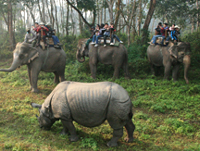 |
Day 07 : Chitwan |
| Breakfast at the hotel.Morning visit the Royal Chitwan National Park (‘Chitwan’ means "in the heart of the jungle’) which covers 932 sq. km. in the flat lowland region of southern Nepal. One of the last populations of single-horned Asiatic rhinoceros lives in the park, which is also among the last refuges for the Bengal tiger. It is one of the most important sub-tropical parks on the Indian subcontinent with populations of the endangered Royal Bengal tiger, Greater One-horned rhinoceros, Gangetic dolphin , Wild Asian elephant, Gaur, Golden Monitor lizard, Gharial crocodile and many more
Overnight at hotel. |
| |
| Day 08 : Fly Chitwan-Kathmandu |
| Breakfast at the hotel. Later transfer to airport to board flight for Kathmandu. On arrival transfer to hotel. Rest of the day at leisure. Overnight at hotel. |
| |
 |
Day 09 : Fly Kathmandu-Varanasi |
| Breakfast at the hotel. Later transfer to airport to connect flight for Varanasi. On arrival transfer to hotel. Varanasi (also known as Benares, Kashi and Kasi) is a Hindu holy city on the banks of the Ganges River in the north Indian state of Uttar Pradesh. Varanasi is considered the most sacred place for all Hindus, irrespective of denomination. Hindus have long believed that bathing in the Ganges or dying in the holy city of Varanasi circumvents reincarnation and hence provides a permanent place in the Swarg (Heaven). Varanasi is the site of the holy shrine of Lord Kasi Viswanatha (a form of Lord Shiva) and is one of the revered 12 yotirlingas of the Lord. |
| |
| Time permitting experience Varanasi intimately when you go on a leisurely rickshaw, ride through the narrow streets and alleys of Varanasi. In the evening the Ghats and temples are lit with oil-lamp lights or candles. Participate in an Arti Ceremony (collective prayer) and watch the floating Diyas (lamps) on the river Ganges. Overnight at hotel. |
| |
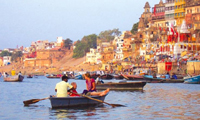 |
Day 10 : Varanasi-Khajuraho |
| Early morning Boat cruise on river Ganges. At dawn, the Ghats are abuzz with activity of the devotees performing their ablutions in the river or offering prayers to the rising sun and performing other religious rituals. Every morning Varanasi attracts thousands of bathers, local as well as pilgrims, who come here to purify themselves by washing away their sins in the holy (but rather dirty) waters of river Ganga, as it is affectionately known here. Later, visit the Vishwanath temple, also called the golden temple because of the gold-plating on its roof. Return back to hotel for breakfast at the hotel. |
| |
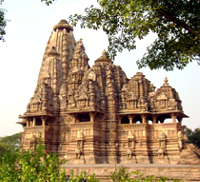 |
After breakfast check-out and leave for Sarnath, 10-Kms away from Varanasi is the fabled place, which bears testimony to its great past where Lord Buddha delivered his first sermon to his disciples, expounding the principles of Buddhism. Visit the art collection at the Archaeological Museum. The main attraction is the superb Capital from Ashokan Pillar - the Ashokan symbol of four back-to-back Lions which has been adopted as the state symbol Independent India. Also visit the Mahabodhi'Buddha temple. Later transfer to airport to connect flight for Khajuraho. On arrival transfer to hotel. |
| |
| Afternoon city tour of Eastern Group of Temples. The Eastern Group of temples include the Ghantai Temple, Vamana Temple dedicated to the "Vamana" or dwarf incarnation of Lord Vishnu and the Javari Temple. There are also three Jain Temples with beautiful carvings and non-erotic sculptures. Although these are Jain Temples, they also contain numerous Vaishnav deities. The Khajuraho group of monuments has been listed as a UNESCO World Heritage Site. Overnight at hotel. |
| |
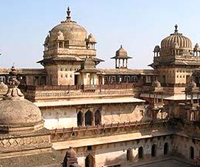 |
Day 11 : Khajuraho-Jhansi-Agra |
Breakfast at the hotel. Later drive to Jhansi railway station (198 Kms / 5 Hrs) Orcha visiting Orcha Enroute.Orcha, one of the ancient city situated on the bank of Betwa. Its grandeur has been captured in stone, frozen in time, a rich legacy of the ages. For this medieval city, the hand of time has rested and the palaces and the temples built by its Bundela rulers in the 16th 17th century retain much of their pristine perfection. Jehangir Mahal, a tiered palace crowned by graceful Chhatries commands a spectacular view of soaring temple spires and cenotaphs.
Later transfer to Jhansi railway station (16 Kms) to board Shatabdi Express for Agra (1755-2005 Hsr). On arrival transfer to hotel. |
| |
 |
Day 12 : Agra |
| Breakfast at the hotel. After breakfast check-out and proceed to world famous Taj Mahal built by Shah Jahan in 1560 in memory of his queen Mumtaz Mahal to enshrine her mortal remains. This architectural marvel is a perfectly proportioned masterpiece fashioned from white marble that stands testimony to the skill of 20,000 craftsmen brought together from Persia, Turkey, France and Italy and who took 17 years to complete this 'Love Poem in Marble' (Friday Closed). |
| |
| Also visit the Agra fort, built alongside the Yamuna river stretching almost 2.5 km. The fort’s colossal double walls rise 20 m in height and measure 2.5 km in circumference. The fort is surrounded by a moat. The magnificent towers, bastions and ramparts and majestic gateways symbolized the confidence and power of the third Mughal emperor. The fort contains splendid palaces both in red sandstone and white marble built by two generations of prolific builders, Afternoon at leisure Overnight stay at hotel. |
| |
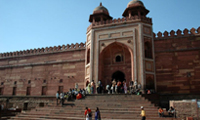 |
Day 13 : Drive Agra-Jaipur |
| Breakfast at the hotel.After breakfast leave for Jaipur (221 Kms/5 Hrs) visiting Fatehpur Sikri (46 Kms from Agra) enroute.Fatehpur Sikri, Akbar’s City of Victory, lies on a hill top almost 40 kms from Agra. It has two different complexes- the royal enclosure of the palaces with the harem and official buildings; and the dargah of the Sufi saint, Salim Chisti with a mosque and gateway. The buildings at Fatehpur Sikri belong to a composite style of architecture with the predominating Islamic style cleverly blended with local Rajasthani and Gujarati styles, a melting pot of cultures. Later drive to Jaipur. On arrival check-in at hotel. Overnight at hotel. |
| |
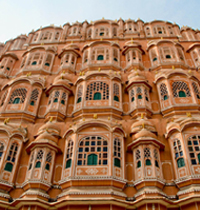 |
Day 15 : Jaipur |
| Breakfast at the hotel. Post breakfast proceed to Amber Fort visiting Hawa Mahal - the Palace of Winds, a la ndmark of Jaipur, a five-storied wonder with a spectacular pyramidal facade and overhanging windows with latticed screens, domes and spires. Visit Amber Fort, a classic, romantic Rajasthani Fort Palace. The rugged, time-ravaged walls of the Fort may not look beautiful from the outside, but the interior is a virtual paradise. Miniatures painted on the walls depict hunting and war scenes, apart from festivals. |
| |
| Afternoon visit the Maharaja's City Palace, the former Royal residence, part of it converted into a museum built in the style of a fortified campus. One of the major attractions in the museum is the portion known as Armoury Museum housing an impressive array of weaponry-pistols, blunderbusses, flintlocks, swords, rifles and daggers. Later visit the Jantar Mantar, which is the largest stone and marble crafted observatory in the world. built in the 18th century with a collection of giant masonry astronomical instruments that continues to provide accurate information even today. Evening at leisure. Overnight at hotel. |
| |
| Day 16 : Fly Jaipur- Jodhpur |
| Breakfast at the hotel. Later transfer to airport to connect flight for Jodhpur. On arrival transfer to hotel. Rest of the day at leisure. Overnight at hotel. |
| |
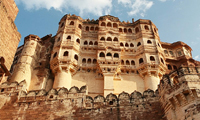 |
Day 17 : Jodhpur |
| Breakfast at hotel. Afternoon visit the impressive 5 km long Mehrangarh Fort on a 37 m low sandstone hill built by Rao Jodha in 1459. Within the fort are some magnificent palaces with meticulously carved panels, latticed windows or "Jarokhas" with evocative names. From the top of the fort one can get a bird’s eye view of the old city. Proceed to the Jaswant Thada, an imposing marble cenotaph built in 1899 for Maharajah Jaswant Singh II, and smaller memorials to other Maharajahs of Jodhpur. Afternoon at leisure. Overnight at the hotel. |
| |
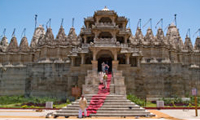 |
Day 18 : Jodhpur- Udaipur By Surface (290 Kms / 6-7 Hrs) |
| Breakfast at the hotel.After breakfast drive to Udaipur En-route visit Ranakpur, the wonderful 3 temples of the Jain sect dating back to the 14th/15th century. The unforgettable main Temple dedicated to Adinatha the first Tirthankar (1439) built in marble took 65 years to complete. It is one of the five holy Jain pilgrimage centres, and has one of the best temple complexes. After the visit to Ranakpur temples continue driving to Udaipur. On arrival in Udaipur, check in at the hotel. Overnight at the hotel. |
| |
 |
Day 19 : Udaipur |
| Breakfast at the hotel.After breakfast visit the City Palace built on the bank of the Pichola Lake, by Maharana Udai Singh in 1570. The impressive complex of several palaces is a blend of Rajput and Mughul influences. The Jagdish Temple (1651) built by Maharana Jagat Singh is a fine example of the Nagara style of temple architecture. A brass Garuda stands outside and stone elephants flank the entrance steps Inside is a black stone image of Vishnu as Jagannath, the Lord of the Universe. Sahelion-ki Bari an ornamental pleasure garden specially made for the ladies of the palace in the 18th century. It has beautiful fountains, trees and flowers. Late afternoon enjoy boat ride on Lake Pichola. Overnight at hotel. |
| |
| Day 20 : Fly Udaipur- Mumbai |
| Breakfast at the hotel. Later transfer to airport to board flight for Mumbai. On arrival in Mumbai connect flight for onward destination. |
| |
|
|
|
|
| |
| DELHI - AGRA - JAIPUR - DEOGARH - MOUNT ABU - UDAIPUR - MUMBAI |
|
|
| |
| Day 01 : Arrive Delhi |
| Meeting and assistance on arrival and transfer to Hotel. Overnight at the hotel |
| |
 |
Day 02 : Delhi |
After breakfast sightseeing of Old and New Delhi.
Morning full day sightseeing of New & Old Delhi. In New Delhi visit the 12th century Qutab Minar, gracefully hand-carved for its entire height of 234ft. and the iron pillar, which has withstood the ravages of time, the mausoleum of emperor Humayun, Drive past India Gate (memorial to viceroy’s residence) and the Parliament House, continue to Old Delhi, drive past Red Fort – a marvel in red sandstone, the Raj Ghat – memorial to Mahatma Gandhi, Overnight at the hotel. |
| |
| Day 03 : Delhi - Agra By Surface 204 Kms |
| Breakfast at the hotel. Later drive to Agra. On arrival check-in at hotel. |
| |
 |
Day 04 : Agra - Jaipur By Surface 232 Kms |
Breakfast at the hotel. After breakfast leave for Jaipur (221 Kms/5 Hrs) visiting Fatehpur Sikri (46 Kms from Agra) enroute.
Fatehpur Sikri, Akbar’s City of Victory, lies on a hill top almost 40 kms from Agra. It has two different complexes- the royal enclosure of the palaces with the harem and official buildings; and the dargah of the Sufi saint, Salim Chisti with a mosque and gateway. The buildings at Fatehpur Sikri belong to a composite style of architecture with the predominating Islamic style cleverly blended with local Rajasthani and Gujarati styles, a melting pot of cultures. Later drive to Jaipur. On arrival check into the hotel. Rest of the day at leisure. Overnight at hotel. |
| |
 |
Day 05 : Jaipur |
| Breakfast at the hotel. Post breakfast proceed to Amber Fort visiting Hawa Mahal - the Palace of Winds, a landmark of Jaipur, a five-storied wonder with a spectacular pyramidal facade and overhanging windows with latticed screens, domes and spires. Visit Amber Fort, a classic, romantic Rajasthani Fort Palace. The rugged, time-ravaged walls of the Fort may not look beautiful from the outside, but the interior is a virtual paradise. Miniatures painted on the walls depict hunting and war scenes, apart from festivals. |
| |
| Afternoon visit the Maharaja's City Palace, the former Royal residence, part of it converted into a museum built in the style of a fortified campus. One of the major attractions in the museum is the portion known as Armoury Museum housing an impressive array of weaponry-pistols, blunderbusses, flintlocks, swords, rifles and daggers. Later visit the Jantar Mantar, which is the largest stone and marble crafted observatory in the world. built in the 18th century with a collection of giant masonry astronomical instruments that continues to provide accurate information even today. Evening at leisure. Overnight at hotel. |
| |
 |
Day 06 : Jaipur - Deogarh 269 Kms |
Breakfast at the hotel, After Breakfast check-out from Hotel and Leave for Deaogarh.
Deogarh is a pleasant, little frequented town midway Udaipur and Pushkar. On the top of the hill where you find the beautifully renovated 17th century Deogarh Mahal Palace, one of India’s best Heritage Hotels. There is much to see within the huge palace itself: murals illustrating the fine local school of miniature painting, a stunning swimming pool, beautifully decorated rooms and lounges. The nearby Raghosagar Lake has an island with a romantic ruined temple and tombs. On arrival check-in at the hotel. |
| |
| Day 07 : Deogarh - Mount Abu 250 Kms |
| Breakfast at the hotel, After Breakfast check-out from Hotel and Leave for Mount Abu. On arrival check-in at the hotel. Overnight at hotel. |
| |
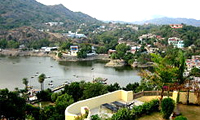 |
Day 08 : In Mount Abu |
Breakfast at Hotel. After Breakfast at Hotel, leave for full day sightseeing of Mt. Abu.
Mount Abu is Rajasthan's only hill station. The 22 km long hill station has among its principal attractions a cool climate, the famous Dilwara group of temples and the Nakki Lake. The sightseeing starts with wonderfully carved Jain temples dating back to the 11th and 13th centuries A.D. Rated as among the finest of Indian temples, it is recommended that any visitor to Rajasthan include them on his itinerary. The marble architecture here is comparable with the best. Overnight at hotel. |
| |
 |
Day 08 : Mount Abu - Udaipur 180 Kms. |
Breakfast at the hotel. After breakfast leave for Udaipur.
On arrival check-in at hotel. Afternoon visit City Palace built on the bank of the Pichola Lake, by Maharana Udai Singh in 1570. The impressive complex of several palaces is a blend of Rajput and Mughul influences. The Jagdish Temple (1651) built by Maharana Jagat Singh is a fine example of the Nagara style of temple architecture. A brass Garuda stands outside and stone elephants flank the entrance steps Inside is a black stone image of Vishnu as Jagannath, the Lord of the Universe. Sahelion-ki Bari an ornamental pleasure garden specially made for the ladies of the palace in the 18th century. It has beautiful fountains, trees and flowers. Overnight at hotel. |
| |
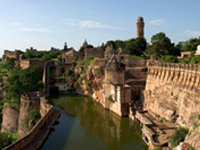 |
Day 09 : Udaipur - Chittorgarh - Udaipur |
| Breakfast at the hotel. After Breakfast drive to Chittorgarh (113 Kms / 03 hrs) Chittorgarh a small city now is said to be the town of the brave, known for its massive fort atop a hill, which can be singled out for its glorious past. It has witnessed some of the bloodiest battles in history and some of the most heroic deeds of valour, which are still sung by the local musicians. The fort over a 180 meter high hillock covering a massive area of 700 acres. The fort is a treasure house of history and historical monuments. It was ravaged thrice, and each time phonix like it rose again. Allaudin Khilji was the first who invaded Chittorgarh in 1303, legend and history corroborate that this was because of his passionate desire to abduct Rani Padmini. Post visit to Chittorgarh drive back to Udaipur. Overnight at hotel. |
| |
 |
Day 11 : Udaipur - Mumbai |
Breakfast at the hotel, After transfer to airport to connect flight for Mumbai.
On arrival transfer to hotel.Afternoon half day visit to Gateway of India, Mumbai's principle landmark erected on the waterfront in 1924 to commemorate King George V's visit to this colony in 1911. Visit Mani Bhavan where Mahatama Gandhi stayed suring his visit to Mumbai and hanging Gardens which offer a splendid view of the city, Chowpatty, Kamala Nehru Park. Drive along the Marine Drive which is fondly known as the 'Queen's Necklace', Haji Ali Mosque, a shrine in honour of a Muslim Saint on an island 500 m. out at sea .Stop at the 'Dhobi Ghat' where Mumbai's 'dirties' are scrubbed, bashed, dyed and hung out to dry. Overnight at hotel. |
| |
 |
Day 12 : Mumbai |
Breakfast at hotel. After breakfast leave for half day excursion to Elephanta Caves.
An early morning excursion across the Mumbai harbour to 1200-year old Elephanta Caves housing some of the most beautiful rock-cuts of the period. The famous Trimurti sculpture of three-faced Shiva depicting his three aspects as Creator, Preserver and Destroyer is powerfully portrayed in the massive sculpture. (Closed on Mondays and not available during the Monsoon.) Afternoon at leisure. |
| |
| Day 13 : Leave Mumbai |
| In time transfer to airport to connect flight for onward destination. |
| |
|
|
|
|
| |
| DELHI - AGRA - JAIPUR - JODHPUR - UDAIPUR - DELHI |
|
|
| |
| Day 01 : Arrive Delhi |
| Arrive Delhi. Meeting and assistance on arrival then transfer to hotel. Rest of the day at leisure. |
| |
 |
Day 02 : In Delhi |
Breakfast at the hotel.
After breakfast full day sightseeing of New & Old Delhi. In New Delhi visit the 12th century Qutab Minar, gracefully hand-carved for its entire height of 234ft. and the iron pillar, which has withstood the ravages of time, the mausoleum of emperor Humayun, Drive past India Gate (memorial to viceroy’s residence) and the Parliament House, continue to Old Delhi, drive past Red Fort – a marvel in red sandstone, the Raj Ghat – memorial to Mahatma Gandhi, Overnight at hotel. |
| |
| Day 03 : Drive Delhi – Agra (201 Kms / 5 Hrs.) |
| Breakfast at the hotel. Later drive to Agra. On arrival check-in at hotel. |
| |
 |
Afternoon visit the world famous Taj Mahal built by Shah Jahan in 1560 in memory of his queen Mumtaz Mahal to enshrine her mortal remains. This architectural marvel is a perfectly proportioned masterpiece fashioned from white marble that stands testimony to the skill of 20,000 craftsmen brought together from Persia, Turkey, France and Italy and who took 17 years to complete this 'Love Poem in Marble' (Friday Closed). |
| |
| Also visit the Agra fort, built alongside the Yamuna river stretching almost 2.5 km. The fort’s colossal double walls rise 20 m in height and measure 2.5 km in circumference. The fort is surrounded by a moat. The magnificent towers, bastions and ramparts and majestic gateways symbolized the confidence and power of the third Mughal emperor. The fort contains splendid palaces both in red sandstone and white marble built by two generations of prolific builders, Overnight stay at hotel. |
| |
| |
| |
 |
Day 04 : Drive Agra - Jaipur (221 Kms / 5-6 Hrs) |
| Breakfast at the hotel. After breakfast leave for Jaipur (221 Kms/5 Hrs) visiting Fatehpur Sikri (46 Kms from Agra) enroute.Fatehpur Sikri, Akbar’s City of Victory, lies on a hill top almost 40 kms from Agra. It has two different complexes- the royal enclosure of the palaces with the harem and official buildings; and the dargah of the Sufi saint, Salim Chisti with a mosque and gateway. The buildings at Fatehpur Sikri belong to a composite style of architecture with the predominating Islamic style cleverly blended with local Rajasthani and Gujarati styles, a melting pot of cultures. |
| |
| Later drive to Jaipur. On arrival check into the hotel. Rest of the day at leisure. Overnight at hotel. |
| |
 |
Day 06 : In Jaipur |
| Breakfast at the hotel. Post breakfast proceed to Amber Fort visiting Hawa Mahal - the Palace of Winds, a landmark of Jaipur, a five-storied wonder with a spectacular pyramidal facade and overhanging windows with latticed screens, domes and spires. Visit Amber Fort, a classic, romantic Rajasthani Fort Palace. The rugged, time-ravaged walls of the Fort may not look beautiful from the outside, but the interior is a virtual paradise. Miniatures painted on the walls depict hunting and war scenes, apart from festivals. |
| |
Afternoon visit the Maharaja's City Palace, the former Royal residence, part of it converted into a museum built in the style of a fortified campus. One of the major attractions in the museum is the portion known as Armoury Museum housing an impressive array of weaponry-pistols, blunderbusses, flintlocks, swords, rifles and daggers. Later visit the Jantar Mantar, which is the largest stone and marble crafted observatory in the world. built in the 18th century with a collection of giant masonry astronomical instruments that continues to provide accurate information even today.
Evening at leisure. Overnight at hotel. |
| |
| Day 06 : Train Jaipur - Jodhpur |
| Breakfast at the hotel. Morning at leisure. Late afternoon transfer to railway station to board Ranthambore Express (1705-2230 hrs) for Jodhpur. On arrival transfer to hotel. |
| |
 |
Day 07 : Jodhpur |
Breakfast at hotel. Afternoon visit the impressive 5 km long Mehrangarh Fort on a 37 m low sandstone hill built by Rao Jodha in 1459. Within the fort are some magnificent palaces with meticulously carved panels, latticed windows or "Jarokhas" with evocative names. From the top of the fort one can get a bird’s eye view of the old city. Proceed to the Jaswant Thada, an imposing marble cenotaph built in 1899 for Maharajah Jaswant Singh II, and smaller memorials to other Maharajahs of Jodhpur.
Afternoon at leisure. Overnight at the hotel. |
| |
 |
Day 08 : Drive Jodhpur - Udaipur |
Breakfast at the hotel.After breakfast drive to Udaipur En-route visit Ranakpur, the wonderful temples of the Jain sect dating back to the 14th/15th century. The unforgettable main Temple dedicated to Adinatha the first Tirthankar (1439) built in marble took 65 years to complete. It is one of the five holy Jain pilgrimage centres, and has one of the best temple complexes.
After the visit to Ranakpur temples continue driving to Udaipur. On arrival in Udaipur, check in at the hotel. Overnight at the hotel. |
| |
 |
Day 09 : Udaipur |
Breakfast at the hotel.After breakfast visit the City Palace built on the bank of the Pichola Lake, by Maharana Udai Singh in 1570. The impressive complex of several palaces is a blend of Rajput and Mughul influences. The Jagdish Temple (1651) built by Maharana Jagat Singh is a fine example of the Nagara style of temple architecture. A brass Garuda stands outside and stone elephants flank the entrance steps Inside is a black stone image of Vishnu as Jagannath, the Lord of the Universe. Sahelion-ki Bari an ornamental pleasure garden specially made for the ladies of the palace in the 18th century. It has beautiful fountains, trees and flowers.
Late afternoon enjoy boat ride on Lake Pichola. Overnight at hotel. |
| Day 10 : Fly Udaipur- Delhi |
| Breakfast at the hotel. Later transfer to airport to board flight for Delhi. On arrival transfer to hotel. |
| |
| Day 11 : Leave Delhi |
| In time transfer to iairport to connect flight for onward destination. |
| |
|
|
|
|
| |
| DELHI - AGRA - JAIPUR - UDAIPUR - DELHI |
|
|
| |
| Day 01 : Arrive Delhi |
| Arrive Delhi. Meeting and assistance on arrival then transfer to hotel. Rest of the day at leisure. Overnight at hotel. |
| |
 |
Day 02 : In Delhi |
Breakfast at the hotel.
After breakfast full day sightseeing of New & Old Delhi. In New Delhi visit the 12th century Qutab Minar, gracefully hand-carved for its entire height of 234ft. and the iron pillar, which has withstood the ravages of time, the mausoleum of emperor Humayun, Drive past India Gate (memorial to viceroy’s residence) and the Parliament House, continue to Old Delhi, drive past Red Fort – a marvel in red sandstone, the Raj Ghat – memorial to Mahatma Gandhi, Overnight at hotel. |
| |
| Day 03 : Drive Delhi – Agra (201 Kms / 5 Hrs.) |
| Breakfast at the hotel. Later drive to Agra. On arrival check-in at hotel. |
| |
 |
Afternoon visit the world famous Taj Mahal built by Shah Jahan in 1560 in memory of his queen Mumtaz Mahal to enshrine her mortal remains. This architectural marvel is a perfectly proportioned masterpiece fashioned from white marble that stands testimony to the skill of 20,000 craftsmen brought together from Persia, Turkey, France and Italy and who took 17 years to complete this 'Love Poem in Marble' (Friday Closed). |
| |
| Also visit the Agra fort, built alongside the Yamuna river stretching almost 2.5 km. The fort’s colossal double walls rise 20 m in height and measure 2.5 km in circumference. The fort is surrounded by a moat. The magnificent towers, bastions and ramparts and majestic gateways symbolized the confidence and power of the third Mughal emperor. The fort contains splendid palaces both in red sandstone and white marble built by two generations of prolific builders, Overnight stay at hotel. |
| |
| |
 |
Day 04 : Drive Agra - Jaipur (221 Kms / 5-6 Hrs) |
| Breakfast at the hotel. After breakfast leave for Jaipur (221 Kms/5 Hrs) visiting Fatehpur Sikri (46 Kms from Agra) enroute. Fatehpur Sikri, Akbar’s City of Victory, lies on a hill top almost 40 kms from Agra. It has two different complexes- the royal enclosure of the palaces with the harem and official buildings; and the dargah of the Sufi saint, Salim Chisti with a mosque and gateway. The buildings at Fatehpur Sikri belong to a composite style of architecture with the predominating Islamic style cleverly blended with local Rajasthani and Gujarati styles, a melting pot of cultures. |
| |
| Later drive to Jaipur. On arrival check into the hotel. Rest of the day at leisure. Overnight at hotel. |
| |
 |
Day 05 : In Jaipur |
| Breakfast at the hotel. Post breakfast proceed to Amber Fort visiting Hawa Mahal - the Palace of Winds, a landmark of Jaipur, a five-storied wonder with a spectacular pyramidal facade and overhanging windows with latticed screens, domes and spires. Visit Amber Fort, a classic, romantic Rajasthani Fort Palace. The rugged, time-ravaged walls of the Fort may not look beautiful from the outside, but the interior is a virtual paradise. Miniatures painted on the walls depict hunting and war scenes, apart from festivals. |
| |
Afternoon visit the Maharaja's City Palace, the former Royal residence, part of it converted into a museum built in the style of a fortified campus. One of the major attractions in the museum is the portion known as Armoury Museum housing an impressive array of weaponry-pistols, blunderbusses, flintlocks, swords, rifles and daggers. Later visit the Jantar Mantar, which is the largest stone and marble crafted observatory in the world. built in the 18th century with a collection of giant masonry astronomical instruments that continues to provide accurate information even today.
Evening at leisure. Overnight at hotel. |
| |
| Day 06 : Fly Jaipur - Jodhpur |
| Breakfast at the hotel. Later transfer to airport to connect flight for Udaipur. On arrival transfer to hotel. |
| |
 |
Afternoon visit the City Palace built on the bank of the Pichola Lake, by Maharana Udai Singh in 1570. The impressive complex of several palaces is a blend of Rajput and Mughul influences. The Jagdish Temple (1651) built by Maharana Jagat Singh is a fine example of the Nagara style of temple architecture. A brass Garuda stands outside and stone elephants flank the entrance steps Inside is a black stone image of Vishnu as Jagannath, the Lord of the Universe. Sahelion-ki Bari an ornamental pleasure garden specially made for the ladies of the palace in the 18th century. It has beautiful fountains, trees and flowers. Overnight at the hotel. |
| |
| |
| |
 |
Day 07 : In Udaipur |
Breakfast at the hotel. After breakfast leave for full day excursion to Ranakpur temples (80 Kms-one way)
Ranakpur arethe wonderful temples of the Jain sect dating back to the 14th/15th century. The unforgettable main Temple dedicated to Adinatha the first Tirthankar (1439) built in marble took 65 years to complete. It is one of the five holy Jain pilgrimage centres, and has one of the best temple complexes. Overnight at hotel. |
| |
| Day 08 : Fly Udaipur- Delhi |
| Breakfast at the hotel. Later transfer to airport to board flight for Delhi. On arrival transfer to hotel. |
| |
| Day 09 : Leave Delhi |
| In time transfer to iairport to connect flight for onward destination. |
| |
|
|
|
|
| |
| DELHI - AGRA - RANTHAMBORE - JAIPUR - NIMAJ - JODHPUR - RAWLA NARLAI - UDAIPUR - DELHI |
|
|
| |
| Day 01 : Arrive Delhi |
| Arrive Delhi. Meeting and assistance on arrival then transfer to hotel. |
| |
 |
Day 02 : In Delhi |
Breakfast at the hotel.
Later full day sightseeing of New & Old Delhi. In New Delhi visit the 12th century Qutab Minar, gracefully hand-carved for its entire height of 234ft. and the iron pillar, which has withstood the ravages of time, the mausoleum of emperor Humayun, Drive past India Gate (memorial to viceroy’s residence) and the Parliament House, continue to Old Delhi, drive past Red Fort – a marvel in red sandstone, the Raj Ghat - memorial to Mahatma Gandhi,
Overnight at hotel. |
| |
| Day 03 : Drive Delhi – Agra (204 Kms / 5 Hrs.) |
| Breakfast at the hotel. Later drive to Agra. On arrival check-in at hotel. |
| |
 |
Afternoon visit the world famous Taj Mahal built by Shah Jahan in 1560 in memory of his queen Mumtaz Mahal to enshrine her mortal remains. This architectural marvel is a perfectly proportioned masterpiece fashioned from white marble that stands testimony to the skill of 20,000 craftsmen brought together from Persia, Turkey, France and Italy and who took 17 years to complete this 'Love Poem in Marble' (Friday Closed). |
| |
| Also visit the Agra fort, built alongside the Yamuna river stretching almost 2.5 km. The fort’s colossal double walls rise 20 m in height and measure 2.5 km in circumference. The fort is surrounded by a moat. The magnificent towers, bastions and ramparts and majestic gateways symbolized the confidence and power of the third Mughal emperor. The fort contains splendid palaces both in red sandstone and white marble built by two generations of prolific builders, Overnight stay at hotel. |
| |
| |
 |
Day 04 : Drive Agra - Bharatpur (Train Bharatpur-Ranthambore ) - (58 Kms / 3 - 4 Hrs) - Jan Shatabdi (1540-1800 hrs) |
| Breakfast at the hotel. Post breakfast check-out and leave for Bharatpur railway station. |
| |
Enroute visit Fatehpur Sikri, Akbar’s City of Victory, lies on a hill top almost 40 kms from Agra. It has two different complexes- the royal enclosure of the palaces with the harem and official buildings; and the dargah of the Sufi saint, Salim Chisti with a mosque and gateway. The buildings at Fatehpur Sikri belong to a composite style of architecture with the predominating Islamic style cleverly blended with local Rajasthani and Gujarati styles, a melting pot of cultures.
Continue to Bharatpur (18 Kms). |
| |
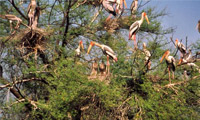 |
Post lunch visit to a nearby village where you can have the first hand experience of village life, their way of living and culture. You will have the chance to interact with local residents of the village. |
| |
There after in time transfer to railway station to board your train Jan Shatabdi Express for Sawaimadhopur. On arrival at Sawaimadhopur transfer to Ranthambore(13 Kms drive) and check-in at lodge/hotel.
Overnight at hotel. |
| |
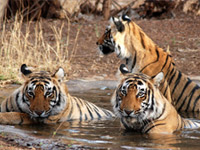 |
Day 05 : In Ranthambore |
| Morning and afternoon visit the Park |
| |
| The open grasslands, forested areas and ruins of monuments within Ranthambore National park provide many opportunities for wildlife viewing while on a jeep safari of National Park Ranthambore. If lucky one can see Tigers hunting deer, their primary prey, on the open grassy regions. A glimpse of a magnificent Royal Bengal Tiger is a sight that cannot be forgotten The tourists, accompanied by a trained guide are allowed into the park at fixed times during the morning and evening. Meals and overnight at lodge/hotel. |
| |
| Day 07 : Drive Ranthambore - Jaipur (167 Kms/4 Hrs) |
| This morning we leave the Tiger Country and leave for “Pink City” Jaipur.. On arrival check-in at hotel Evening drive up to Birla Mandir (modern hindu temple) to witness a brief ‘arti’ (prayer and ritual ceremony)Overnight at hotel. |
| |
 |
Day 08 : In Jaipur |
| Breakfast at the hotel. |
| |
| Post breakfast proceed to Amber Fort visiting Hawa Mahal - the Palace of Winds, a landmark of Jaipur, a five-storied wonder with a spectacular pyramidal facade and overhanging windows with latticed screens, domes and spires. Visit Amber Fort, a classic, romantic Rajasthani Fort Palace. The rugged, time-ravaged walls of the Fort may not look beautiful from the outside, but the interior is a virtual paradise. Miniatures painted on the walls depict hunting and war scenes, apart from festivals. |
| |
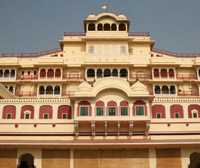 |
Afternoon visit the Maharaja's City Palace, the former Royal residence, part of it converted into a museum built in the style of a fortified campus. One of the major attractions in the museum is the portion known as Armoury Museum housing an impressive array of weaponry-pistols, blunderbusses, flintlocks, swords, rifles and daggers. Later visit the Jantar Mantar, which is the largest stone and marble crafted observatory in the world. built in the 18th century with a collection of giant masonry astronomical instruments that continues to provide accurate information even today. |
| |
| Enjoy a cycle rickshaw (pedi cab) ride through the narrow alleys of old town and experience the thrill how the locals commute on them daily. For the shoppers wanting to sharpen their bargaining skills, try your hand at small shops selling handicrafts and curios on the side walks of the Hawa Mahal. Overnight at the hotel. |
| |
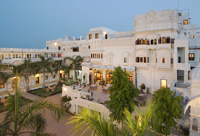 |
Day 09 : Jaipur - Nimaj (222 Kms/4-5 Hrs) |
| This morning we drive to Nimaj. Nimaj near Jodhpur was founded by rao Jodha (Marwar) in the year 1453 A.D. His grandson ‘Rao Uda Ji’ became a sovereign ruler of Nimaj and Jaitaran, and founded the sub clan popularly known as Udawat Rathores. Nimaj swas later amalgamated with Jodhpur.
Rest of the day at leisure.
Overnight at hotel. |
| |
| Day 10 : In Nimaj |
| Morning we take you on a ‘Kabila Safari’ to visit the snake charmers clan, the ‘dhanis’ hamlets of the ‘Bishnoi, seervi & Kumwat’ communities. You a;so get a chance to visit the ‘gujjar’ nom,adic shepherd settlements in the vicinity. Afternoon at leisure for independent activities. Overnight at hotel. |
| |
| Day 11 : Nimaj - Jodhpur (110 Kms/3 Hrs) |
| This morning we drive to the city of Jodhpur. On arrival check-in at hotel. Overnight at hotel. |
| |
 |
Day 12 : In Jodhpur |
| Breakfast at hotel. Afternoon visit the impressive 5 km long Mehrangarh Fort on a 37 m low sandstone hill built by Rao Jodha in 1459. Within the fort are some magnificent palaces with meticulously carved panels, latticed windows or "Jarokhas" with evocative names. From the top of the fort one can get a bird’s eye view of the old city. Proceed to the Jaswant Thada, an imposing marble cenotaph built in 1899 for Maharajah Jaswant Singh II, and smaller memorials to other Maharajahs of Jodhpur. Afternoon at leisure. Overnight at the hotel. |
| |
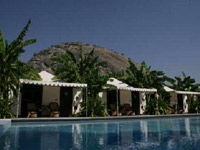 |
Day 13 : Jodhpur - Rawla Narlai (150 Kms/3 Hrs) |
| Morning drive to Rawla Narlai. Rawla Narlai, the 17th century fortress which became an enchanting hunting lodge was gifted Maharaja Umaid SInghji of Jodhpur to his younger brother Maharaja Ajit SInghji. Two decades later, Maharaj Swaroop Singh, his son, together his wife Rani Ushadevi undertook the project to restore this exotic vills into its true origins. The villa was later converted into this exclusive heritage hotel, with carved pillars, murals and covered varand as that add to its rustic charm. |
| |
| Afternoon take Jeep Safari into nearby Forests where Deer, Leopards and Chitals can be spotted. The safari also extends to a visit to the nearby Handicraft centre where locals craft Dhurries and handcrafted Textiles. Overnight at hotel. |
| |
 |
Day 14 : Rawla Narlai-Udaipur (140 Kms/3 Hrs) |
| Breakfast at the hotel.After breakfast drive to Udaipur. |
| |
| En-route visit Ranakpur, the wonderful temples of the Jain sect dating back to the 14th/15th century. The unforgettable main Temple dedicated to Adinatha the first Tirthankar (1439) built in marble took 65 years to complete. It is one of the five holy Jain pilgrimage centres, and has one of the best temple complexes. After the visit to Ranakpur temples continue driving to Udaipur. On arrival in Udaipur, check in at the hotel. |
| |
| Late afternoon enjoy boat ride on Lake Pichola a perfect way to enjoy the panoramic vistas of white Udaipur. Sail past rustic ghats and see locals going about their daily routine on the banks as you take in the spectacular panorama formed by palatial marble palaces and structures that flank the banks of Lake Pichola. Overnight at the hotel. |
| |
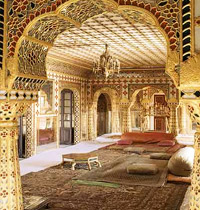 |
Day 15 : In Udaipur |
| Breakfast at the hotel. After breakfast visit the City Palace built on the bank of the Pichola Lake, by Maharana Udai Singh in 1570. The impressive complex of several palaces is a blend of Rajput and Mughul influences. The Jagdish Temple (1651) built by Maharana Jagat Singh is a fine example of the Nagara style of temple architecture. A brass Garuda stands outside and stone elephants flank the entrance steps Inside is a black stone image of Vishnu as Jagannath, the Lord of the Universe. Sahelion-ki Bari an ornamental pleasure garden specially made for the ladies of the palace in the 18th century. It has beautiful fountains, trees and flowers. |
| |
| Afternoon visit the Crystal Gallery housed in hotel Fateh Prakash Palace. It’s hailed as probably the single largest private collection of crystal anywhere in the world. Here you see one of the most exclusive and exquisite crystal collections ordered by Maharana Sajjan Singh in 1877. The collection includes a bewildering number of objects d'art, dinner sets, perfume bottles, decanters, glasses, washing bowls and even furniture. The Crystal Gallery also houses the only crystal bed in the world.Overnight at hotel. |
| |
| Day 16 : Fly Udaipur - Delhi 9W 708 (1530-1640 hrs) |
| Morning at leisure. Afternoon fly back to Delhi. On arrival transfer to hotel. Rest of the day at leisure. Overnight at hotel. |
| |
| Day 17 : Leave Delhi |
| Our services end on this day with departure transfer to international airport to connect flight back home. |
|
|
|
|
| |
| DELHI - AGRA - SAMODE - NIMAJ - ROHETGARH - DEOGARH - UDAIPUR - MUMBAI |
|
|
| |
| Day 01 : Arrive Delhi |
| Arrive Delhi. Meeting and assistance on arrival then transfer to hotel. |
| |
 |
Day 02 : In Delhi |
Breakfast at the hotel.
Later full day sightseeing of New & Old Delhi. In New Delhi visit the 12th century Qutab Minar, gracefully hand-carved for its entire height of 234ft. and the iron pillar, which has withstood the ravages of time, the mausoleum of emperor Humayun, Drive past India Gate (memorial to viceroy’s residence) and the Parliament House, continue to Old Delhi, drive past Red Fort – a marvel in red sandstone, the Raj Ghat - memorial to Mahatma Gandhi,
Overnight at hotel. |
| |
| Day 03 : Drive Delhi – Agra (204 Kms / 5 Hrs.) |
| Breakfast at the hotel. Later drive to Agra. On arrival check-in at hotel. |
| |
 |
Afternoon visit the world famous Taj Mahal built by Shah Jahan in 1560 in memory of his queen Mumtaz Mahal to enshrine her mortal remains. This architectural marvel is a perfectly proportioned masterpiece fashioned from white marble that stands testimony to the skill of 20,000 craftsmen brought together from Persia, Turkey, France and Italy and who took 17 years to complete this 'Love Poem in Marble' (Friday Closed). |
| |
| Also visit the Agra fort, built alongside the Yamuna river stretching almost 2.5 km. The fort’s colossal double walls rise 20 m in height and measure 2.5 km in circumference. The fort is surrounded by a moat. The magnificent towers, bastions and ramparts and majestic gateways symbolized the confidence and power of the third Mughal emperor. The fort contains splendid palaces both in red sandstone and white marble built by two generations of prolific builders, Overnight stay at hotel. |
| |
| |
 |
Day 04 : Agra - Samode By Surface (261 Kms / 6 Hrs) |
| Breakfast at the hotel. After breakfast leave for Samode. |
| |
| Fatehpur Sikri, Akbar’s City of Victory, lies on a hill top almost 40 kms from Agra. It has two different complexes- the royal enclosure of the palaces with the harem and official buildings; and the dargah of the Sufi saint, Salim Chisti with a mosque and gateway. The buildings at Fatehpur Sikri belong to a composite style of architecture with the predominating Islamic style cleverly blended with local Rajasthani and Gujarati styles, a melting pot of cultures. On arrival check into the hotel. Afternoon enjoy the typical village camel cart ride and explore the quaint village of Samode. Overnight at hotel. |
| |
 |
Day 05 : In Samode |
| Breakfast at the hotel. Morning take a jeep safari visiting old ruins and small villages on route. Afternoon drive to Jaipur (40 Kms) and visit the Maharaja's City Palace, the former Royal residence, part of it converted into a museum built in the style of a fortified campus. One of the major attractions in the museum is the portion known as Armoury Museum housing an impressive array of weaponry-pistols, blunderbusses, flintlocks, swords, rifles and daggers. Later visit the Jantar Mantar, which is the largest stone and marble crafted observatory in the world. built in the 18th century with a collection of giant masonry astronomical instruments that continues to provide accurate information even today. |
| |
| After the city tour walk take a long walk to Chotu Chaupad Bazaar where villagers from around Jaipur come to sell and trade their produce. Here you can see the villagers and bargaining the deals and trying to sell their products. Evening return back to Samode.Overnight at the hotel |
| |
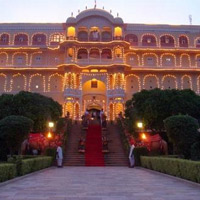 |
Day 06 : Samode - Jaipur - Nimay By Surface (222kms/05 Hrs) |
| Breakfast at the hotel. |
| |
| Post breakfast proceed to Amber Fort visiting Hawa Mahal - the Palace of Winds, a landmark of Jaipur, a five-storied wonder with a spectacular pyramidal facade and overhanging windows with latticed screens, domes and spires. Visit Amber Fort, a classic, romantic Rajasthani Fort Palace. The rugged, time-ravaged walls of the Fort may not look beautiful from the outside, but the interior is a virtual paradise. Miniatures painted on the walls depict hunting and war scenes, apart from festivals. Afternoon drive to Nimaj. near Jodhpur was founded by Rao Jodha (Marwar) in the year 1453 A.D. His grandson ‘Rao Uda Ji’ became a sovereign ruler of Nimaj and Jaitaran, and founded the sub clan popularly known as Udawat Rathores. Nimaj swas later amalgamated with Jodhpur. On arrival check-in at hotel. Rest of the day at leisure. Overnight at hotel. |
| |
| Day 07 : In Nimaj |
| Breakfast at the hotel. Post breakfast take guided Jeep Safari organized by resort. The safari takes you through the villages and wild life sanctuary where you will get the chance to see the rare Black Buck and other game birds. Overnight at the hotel. |
| |
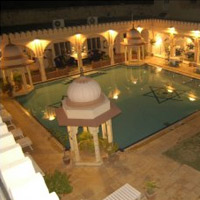 |
Day 08 : Nimaj - Rohetgarh By Surface (150 KMS/06 Hrs) |
| Breakfast at the hotel. After breakfast, drive to Jodhpur. Afternoon visit the impressive 5 km long Mehrangarh Fort on a 37 m low sandstone hill built by Rao Jodha in 1459. Within the fort are some magnificent palaces with meticulously carved panels, latticed windows or "Jarokhas" with evocative names. From the top of the fort one can get a bird’s eye view of the old city. Proceed to the Jaswant Thada, an imposing marble cenotaph built in 1899 for Maharajah Jaswant Singh II, and smaller memorials to other Maharajahs of Jodhpur. Post city tour drive to Rohetgarh (40 Kms). On arrival check-in at hotel Rohetgarh. |
| |
| Rohet Garh is one of the most popular Heritage Hotels of Rajasthan. Situated on the banks of a lake and set in the midst of rural surroundings, it is a haven of peace and tranquility. Sprawling lawns and manicured gardens, which invite a multitude of birds and dancing peacocks, herald your entry into this oasis where the bird song is the only sound you will hear. A superb swimming pool with four charming pavilions entices you for a refreshing dip. An elegant, beautifully appointed lounge, serene verandahs, and terraces with breathtaking views, make perfect venues for relaxation. Overnight at the hotel. |
| |
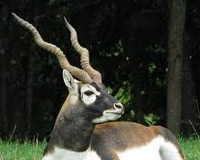 |
Day 09 : Rohetgarh - Deogarh By Surface (250 KMS/06 Hrs) |
| Breakfast at the hotel. Post breakfast take a village Jeep Safari. This showcase the best of the land, it is a complete cultural experience, which encompasses all that this region has to offer. From the warm and hospitable people, to the various customs and ceremonies, guests have the rare privilege of being welcomed into people's homes and interacting with them. They get to experience and understand a way of life that takes them closer to their roots. They meet the 'Premier ecologists of the world', the Bishnois, who have protected nature for more than 500 years and are responsible for the very survival of species like the Black Buck antelope (India's most beautiful antelope and a rare and protected species today). They share a beautiful relationship with this special animal, wherein the antelope stays close to Bishnoi habitation, never leaving it, and displays complete trust in the Bishnoi people. Guests also meet the Raikas (shepherds) with their glorious costumes, and the Paliwals and Meghwals, the Brahmin farmers and weavers respectively. |
| |
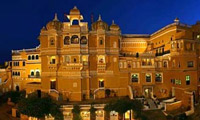 |
Afternoon drive to Deogarh. On arrival check-in at hotel Deogarh Mahal. |
| |
| Deogarh is a pleasant, little frequented town midway Udaipur and Pushkar. On the top of the hill where you find the beautifully renovated 17th century Deogarh Mahal Palace, one of India’s best Heritage Hotels. There is much to see within the huge palace itself: murals illustrating the fine local school of miniature painting, a stunning swimming pool, beautifully decorated rooms and lounges. The nearby Raghosagar Lake has an island with a romantic ruined temple and tombs. Overnight at hotel |
| |
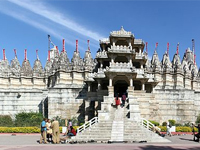 |
Day 10 : Deogarh - Udaipur By Surface (190 KMS/05 Hrs) |
| Breakfast at the hotel. After breakfast drive to Udaipur visiting Ranakpur (100 Kms/2.5 Hrs) temples enroute. |
| |
| Ranakpur, the wonderful temples of the Jain sect dating back to the 14th/15th century. The unforgettable main Temple dedicated to Adinatha the first Tirthankar (1439) built in marble took 65 years to complete. It is one of the five holy Jain pilgrimage centres, and has one of the best temple complexes. After the visit to Ranakpur temples continue driving to Udaipur. On arrival in Udaipur, check in at the hotel. Overnight at the hotel. |
| |
 |
Day 11 : In Udaipur |
| Breakfast at the hotel.After breakfast visit the City Palace built on the bank of the Pichola Lake, by Maharana Udai Singh in 1570. The impressive complex of several palaces is a blend of Rajput and Mughul influences. The Jagdish Temple (1651) built by Maharana Jagat Singh is a fine example of the Nagara style of temple architecture. A brass Garuda stands outside and stone elephants flank the entrance steps Inside is a black stone image of Vishnu as Jagannath, the Lord of the Universe. Sahelion-ki Bari an ornamental pleasure garden specially made for the ladies of the palace in the 18th century. It has beautiful fountains, trees and flowers. |
| |
| Afternoon visit the Crystal Gallery housed in hotel Fateh Prakash Palace. It’s hailed as probably the single largest private collection of crystal anywhere in the world. Here you see one of the most exclusive and exquisite crystal collections ordered by Maharana Sajjan Singh in 1877. The collection includes a bewildering number of objects d'art, dinner sets, perfume bottles, decanters, glasses, washing bowls and even furniture. The Crystal Gallery also houses the only crystal bed in the world. Overnight at hotel. |
| |
 |
Day 12 : Udaipur - Mumbai |
| Breakfast at the hotel, After transfer to airport to connect flight for Mumbai. On arrival transfer to hotel. |
| |
| Afternoon half day visit to Gateway of India, Mumbai's principle landmark erected on the waterfront in 1924 to commemorate King George V's visit to this colony in 1911. Visit Mani Bhavan where Mahatama Gandhi stayed suring his visit to Mumbai and hanging Gardens which offer a splendid view of the city, Chowpatty, Kamala Nehru Park. Drive along the Marine Drive which is fondly known as the 'Queen's Necklace', Haji Ali Mosque, a shrine in honour of a Muslim Saint on an island 500 m. out at sea .Stop at the 'Dhobi Ghat' where Mumbai's 'dirties' are scrubbed, bashed, dyed and hung out to dry. Overnight at hotel. |
| |
 |
Day 12 : Mumbai |
| Breakfast at hotel. After breakfast leave for half day excursion to Elephanta Caves. An early morning excursion across the Mumbai harbour to 1200-year old Elephanta Caves housing some of the most beautiful rock-cuts of the period. The famous Trimurti sculpture of three-faced Shiva depicting his three aspects as Creator, Preserver and Destroyer is powerfully portrayed in the massive sculpture. (Closed on Mondays and not available during the Monsoon.). Afternoon at leisure. |
| |
| Day 13 : Leave Mumbai |
| In time transfer to airport to connect flight for onward destination |
|
|
|
|
|
| |
|
| DELHI - PUSHKAR - JAIPUR - AGRA - DELHI |
|
|
| |
| Day 01 : Arrive Delhi |
| Arrive Delhi. Meeting and assistance on arrival then transfer to hotel.
Rest of the day at leisure. |
| |
 |
Day 02 : In Delhi |
| Breakfast at the hotel. Later full day sightseeing of New & Old Delhi. In New Delhi visit the 12th century Qutab Minar, gracefully hand-carved for its entire height of 234ft. and the iron pillar, which has withstood the ravages of time, the mausoleum of emperor Humayun, Drive past India Gate (memorial to viceroy’s residence) and the Parliament House, continue to Old Delhi, drive past Red Fort – a marvel in red sandstone, the Raj Ghat – memorial to Mahatma Gandhi, Overnight at hotel. |
| |
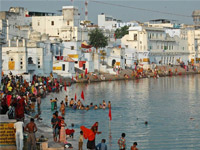 |
Day 03 : Delhi-Ajmer- Pushkar |
| Early morning transfer to Delhi Railway Station in good time to catch New Delhi Ajmer Shatabdi Express to Ajmer which departs Delhi at 0610 hours and arrives into Ajmer at 1300 hours. |
| |
| On arrival in Ajmer drive to Pushkar and check into the resort. Afternoon drive to the south to the Hindu holy town of Pushkar. At the centre of the village is Pushkar Lake, believed to have formed when Brahma dropped a lotus while looking for somewhere to pray. Now the village has over 400 temples, and many pilgrims come to bathe in the holy waters around the time of the full moon. Overnight at hotel. |
| |
| Day 04 : In Pushkar |
| Breakfast at the hotel. Full day at leisure to explore the place with local bazaar visits etc. Overnight at the Hotel. |
| |
 |
Day 05 : Drive Pushkar – Jaipur (140 km - 3 hours drive) |
| Breakfast at the hotel. After breakfast drive to Jaipur through the rugged hills that surround Jaipur. On arrival check into the hotel. |
| |
| Afternoon take a guided tour through the old city to explore the colorful markets and bazaars before continuing onto the City Palace complex that occupies the centre of Jaipur. Painted pink as a mark of welcome, the City Palace was completed in 1732 and houses the intriguing Armory Museum and the beautiful Peacock Gate. Nearby is the Hawa Mahal, or Palace of the Winds, which forms part of the east wall of the City Palace complex. Built at the turn of the 19th Century this five storied structure with its elaborate façade was built for the ladies of the harem and is best seen from the street outside. Further along is the Jantar Mantar the largest stone observatory in world. Overnight at the Hotel. |
| |
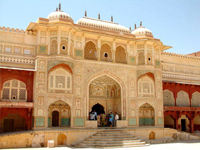 |
Day 06 : In Jaipur |
Breakfast at the hotel. Post breakfast proceed to Amber Fort visiting Hawa Mahal - the Palace of Winds, a landmark of Jaipur, a five-storied wonder with a spectacular pyramidal facade and overhanging windows with latticed screens, domes and spires. Visit Amber Fort, a classic, romantic Rajasthani Fort Palace. The rugged, time-ravaged walls of the Fort may not look beautiful from the outside, but the interior is a virtual paradise. Miniatures painted on the walls depict hunting and war scenes, apart from festivals.
Afternoon at leisure. Overnight at hotel. |
| |
 |
Day 07 : In Jaipur-Fatehpur Sikri-Agra |
| Breakfast at the hotel. After breakfast drive to Agra en-route visit to Fatehpur Sikri.Fatehpur Sikri, Akbar’s City of Victory, lies on a hill top almost 40 kms from Agra. It has two different complexes- the royal enclosure of the palaces with the harem and official buildings; and the dargah of the Sufi saint, Salim Chisti with a mosque and gateway. The buildings at Fatehpur Sikri belong to a composite style of architecture with the predominating Islamic style cleverly blended with local Rajasthani and Gujarati styles, a melting pot of cultures. |
| |
| Continue drive to Agra and check into the hotel. Afternoon visit the world famous Taj Mahal built by Shah Jahan in 1560 in memory of his queen Mumtaz Mahal to enshrine her mortal remains. This architectural marvel is a perfectly proportioned masterpiece fashioned from white marble that stands testimony to the skill of 20,000 craftsmen brought together from Persia, Turkey, France and Italy and who took 17 years to complete it. (Friday Closed).Overnight at hotel. |
| |
 |
Day 08 : Drive Agra – Delhi (201 km – 5 hours drive) |
| Breakfast at the hotel. After breakfast visit the Agra fort, built alongside the Yamuna river stretching almost 2.5 km. The fort’s colossal double walls rise 20 m in height and measure 2.5 km in circumference. The fort is surrounded by a moat. The magnificent towers, bastions and ramparts and majestic gateways symbolized the confidence and power of the third Mughal emperor. The fort contains splendid palaces both in red sandstone and white marble built by two generations of prolific builders, Later drive to Delhi. On arrival check into the hotel. |
| |
| Day 9 : Leave Delhi |
| In time departure transfer to international airport for flight back home |
|
|
|
|
| |
|
| |
| Day 01 : Arrive Mumbai |
| Meeting and assistance on arrival and transfer to hotel. Overnight at hotel. |
| |
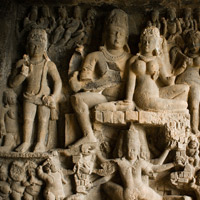 |
Day 02 : Mumbai |
| Breakfast at hotel.After breakfast leave for half day excursion to Elephanta Caves. An early morning excursion across the Mumbai harbour to 1200-year old Elephanta Caves housing some of the most beautiful rock-cuts of the period. The famous Trimurti sculpture of three-faced Shiva depicting his three aspects as Creator, Preserver and Destroyer is powerfully portrayed in the massive sculpture. (Closed on Mondays and not available during the Monsoon.) |
| |
| Afternoon half day visit to Gateway of India, Mumbai's principle landmark erected on the waterfront in 1924 to commemorate King George V's visit to this colony in 1911. Visit Mani Bhavan where Mahatama Gandhi stayed suring his visit to Mumbai and hanging Gardens which offer a splendid view of the city, Chowpatty, Kamala Nehru Park. Drive along the Marine Drive which is fondly known as the 'Queen's Necklace', Haji Ali Mosque, a shrine in honour of a Muslim Saint on an island 500 m. out at sea .Stop at the 'Dhobi Ghat' where Mumbai's 'dirties' are scrubbed, bashed, dyed and hung out to dry. |
| |
| Day 03 : Mumbai - Goa By Flight |
| Morning transfer to airport to connect flight for Goa. Meeting and assistance on arrival, and transfer t hotel. Rest of the day at leisure. Overnight at hotel. |
| |
 |
Day 04 : In Goa |
Breakfast at the hotel.
After breakfast proceed to Altinho Hill for a breathtaking view of Panjim and river Mandovi. Arrive to Donapaula for a view of India's largest natural harbour Marmgoa. Visit Basillica of Bom Jesus where in is enshrined the body of St. Francis Xavier in a silver ornate casket. St. Cathedra, the biggest church in the East. Heavily gilded central altars depict the martyrdom of Saint Catherine, to whom the cathedral is dedicated Also visit Ponda, the temple city & visit Mangueshi & Shantadurga temples. Also visit the famous churches at Old Goa – Basilica of Bom Jesus & The Se Cathedral.
Afternoon at leisure. Overnight at hotel. |
| |
| Day 05 : In Goa |
| Breakfast at the hotel.
Full day at leisure. Overnight at hotel. |
| |
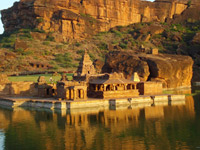 |
Day 06 : Goa - Badami By Surface 363 Kms. |
Breakfast at the hotel.Later leave for Badami by surface. On arrival check-in at hotel.
Badami is known for its beautifully carved cave temples, artificial lake, museums and rock-cut into the cliff face of a red sandstone hill of 6th & 7th Century. Badami was at one time the capital of the Chalukyas. The Pallavas, who had been defeated by Pulakesi II, later captured and destroyed Badami to avenge their defeat. Badami was also in the possession of the Vijayanagar Kings, the Adil Shahis, the Savanur Nawabs, the Marathas, Hyder Ali and finally the British who made it part of the Bombay Presidency.Rest of the day at leisure. Overnight at hotel. |
| |
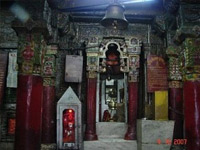 |
Day 07 : In Badami |
Breakfast at the hotel.
Morning sightseeing tour of Badami, known for its rock-cut cave temples. Numbering five, these temples are over thirteen hundred years old. They have been carved out of the red sandstone hills surrounding Badami. Apart from rock-cut temples, the town also has some other temples and a beautiful tank. Lord Shiva is worshipped as the God of Souls in the Bhootnath Temple. The Agastyatirtha Tank is a beautiful water body considered as holy by the pilgrims. The Archaeological Museum has a good collection of objects from Badami as well as Aihole and Pattadakal. Afternoon at leisure. Overnight at hotel. |
| |
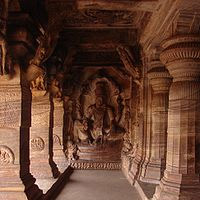 |
Day 08 : Badami - Hospet By Surface 189 Kms |
| Breakfast at the hotel. Morning leave for Hospet enroute visiting Aihole & Pattadakal. Being a region steeped in history, the vicinity of Badami offers a plethora of attractions to the touirists. Pattadakal was the second capital of the mighty Chalukyans and a place that hosted important state functions of the time. Aihole, situated some 46 km off Badami, was another architectural centre of the Chalukyas. There are a number of Hindu temples constructed in the 6th and 7th centuries. The Mahakuta Temple, situated around 14 km from Badami, is a well-known place of worship. |
| |
| Hospet, a small dusty town in Northern Karnataka, was once the seat of the powerful Vijayanagar Empire and its importance lies in its nearness to Hampi, the erstwhile capital of the Vijayanagar rulers. There was a time when Hampi was the epitome of architectural wonders. Most of the great buildings of this place are now in ruins, though UNESCO and the Archaeological Survey of India have tried their best to recreate the original charm of the place. Hospet is the ideal base for tourists visiting Hampi and other nearby places. On arrival check-in at hotel. Overnight at hotel. |
| |
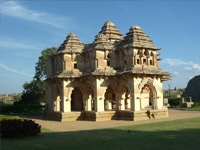 |
Day 09 : In Hospet |
Breakfast at the hotel.
Full day excursion to Hampi. The artisans of the Vijayanagar Empire perfected the art of blending their architectural style with the rocky terrain of the region. The excavations at Hampi carried out by the Archaeological Survey of India in 1976 have revealed the ruins of a rich and flourishing empire. Today the ruins lie sprawled over a large area of 26 square kilometres. Of the other attractions, the Chitradurga Fort (290 km) situated at the foothills of a group of granite hills is worth visiting. Overnight at hotel. |
| |
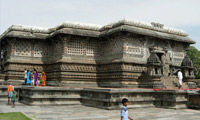 |
Day 10 : Hospet-Hassan By Surface 330 Kms |
| After breakfast leave for Hassan by surface. On arrival check-in at hotel. Hassan is a picturesque town in the heart of malnad with a pleasant climate. It is about 180 KM from Bangalore, the capital city of Karnataka. Hassan District was under the reign of Mouryas of North in the 3rd BC and later kingdoms of Kadambas, Chalukyas, Gangas, Hoysalas and Vijayanagar empire The Hoysalas brought world wide acclaim to the district through their unique style of Temple Architecture. It is surrounded by 6 districts namely Chikmagalur, Mangalore, Madikeri, Mysore, Mandya & Tumkur. Overnight at hotel. |
| |
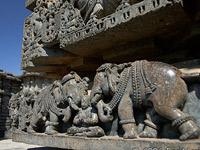 |
Day 11 : In Hassan |
| Breakfast at the hotel. Morning sightseeing tour takes you to Halebid the last capital of Hoysala rulers in 11th/12th century. The Hoysalas were a mighty martial race, but did not let that interfere with their culture and fostering of some of the greatest masterpieces of the world. The Hoysalesvara Temple dedicated to Lord Shiva at Halebid is perched on a star-shaped base. Outside there is a Nandi Bull, the mount of Shiva, was never completed despite 86 years of labour. Every centimeter of the outside wall of this temple and much of the interior is covered with an endless variety of Hindu deities, sages, animals and birds. A few kilometers further we reach Belur. The religious capital of Hoysala. Visit the ornamental gopuram of the Chennakesava Temple dedicate to Lord Vishnu, which appears unexpectedly around a bend. It took 103 years to complete. Overnight at hotel. |
| |
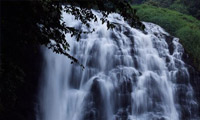 |
Day 12 : Hassan-Coorg By Surface 178 Kms |
| Breakfast at the hotel and later leave for Coorg. On arrival check-in at hotel. Kodagu or Coorg is derived from the local version “Kodavu” and the people of Kodagu Kodavas. According to Puranic versions the land of initial settlement was called Krodadesa which later became Kodavu. It is also said that Kodagu is derived from the word Kodava, Kod means 'give' and avva means 'mother', i.e mother Kaveri, the river Kaveri. Rest of the day at leisure. Overnight at hotel. |
| |
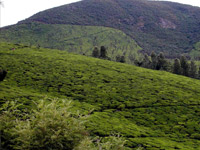 |
Day 13 : In Coorg |
Breakfast at the hotel. Rest of the day free to explore this beauty of nature on your own, visit Madikeri, also called the capital of Coorg Madikeri is often known as the Scotland of India. It has enchanted millions of travellers with its misty hills, lush forests, coffee plantations and breath taking views. he places of interest include Kushalnagar, a great picnic spot. Omkareshwara Temple, With a dome in the middle of a square lake and minarets at each corner, this is a catholic mix of Keralite, Gothic and Islamic architectural styles. Built in 1820 by King Lingarajendra.Overnight at hotel. |
| |
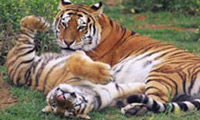 |
Day 14 : Coorg - Nagarhole By Surface 110 Kms |
| Breakfast at the hotel and later leave for Nagarhole. On arrival check-in at hotel.Nagarhole National Park also known as 'Rajiv Gandhi National Park,' is spread between Kodagu and Mysore districts. Located to the northwest of Bandipur National Park, Kabini reservoir separates the two. The exclusive hunting reserve of the former rulers of Mysore, the park has rich forest cover, small streams, valleys, and waterfalls. The park boasts a healthy tiger-predator ratio, and tiger, bison, and elephant can be found in good numbers. Afternoon visit the Park. Overnight at hotel. |
| |
| Day 15 : In Nagarhole |
| Breakfast at the hotel.
Morning visit to Park. Lunch at hotel. Overnight at hotel. |
| |
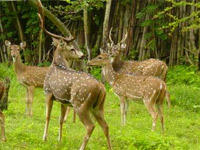 |
Day 16 : Nagarhole-Madhumalai By Surface 170 Kms |
Breakfast at the hotel.
Morning drive to Madhumalai.
On arrival check-in at hotel. Madhumalai Sanctuary, rich in bio-diversity and dense vegetation, is sandwiched between the Bandipur and Annamalai sanctuaries, and together the three form the Nilgiri Biosphere Reserve in the Western Ghats, with the Mysore-Ooty highway passing through it. It is situated at an elevation of 1000 metres and extends over an area of 321 sq. kms where lie the sanctuary between Kerala and Karnataka states. It was one of the first wildlife sanctuaries in the country and is home to the spotted deer, tiger, wild boar & sloth bear. Otters and crocodiles inhabit the Moyar River. Overnight at hotel. |
| |
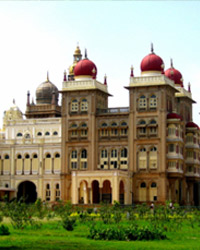 |
Day 17 : Madhumalai-Mysore By Surface 130 Kms |
| Breakfast at the hotel.
After the breakfast leave for Mysore by surface enroute visiting Sravanabelgola. Shravanbelagola, a Jain pilgrimage centre famous for the statue of Gommateshwara. The statue, an impressive site, stands on the Vindhyagiri overlooking the town of Shravanbelagola.
On arrival check-in at hotel. |
| |
| Mysore, the former capital of the princely state, is the second largest city in Karnataka. It is a beautiful city of stately palaces, gardens, parks and museums. Sandalwood and a centre for the manufacture of incense sticks. The city is famous for the scent of jasmine in the spring. |
| |
| Afternoon visit the Maharaja Palace (1857): that was once the residence of the Wodeyars, Built in Indo-Saracenic style in grand proportions, with domes, arches and colonnades of carved pillars and shiny marble floors. One of the largest palaces in the country with some art treasures, Also visit Chamundi Hill has the temple of Durga (Chamundeswari) celebrating her victory over the buffalo god. She became the guardian deity o the Wodeyars. On the road to the top is the giant Nandi Monolith carved in 1659 (4,8m x 7,6m huge bull sculpture). Overnight at the hotel. |
| |
| Day 18 : Mysore-Bangalore By Surface 161 Kms |
| Breakfast at the hotel.
Later leave for Bangalore. On arrival orientation tour of Bangalore including a visit to Lalbagh, Nandi Bull and drive past Vidhan Soudha. Evening transfer to airport to connect flight for onward destination. |
| |
|
|
|
|
| |
| |
|


